Screw Machined Parts and Products
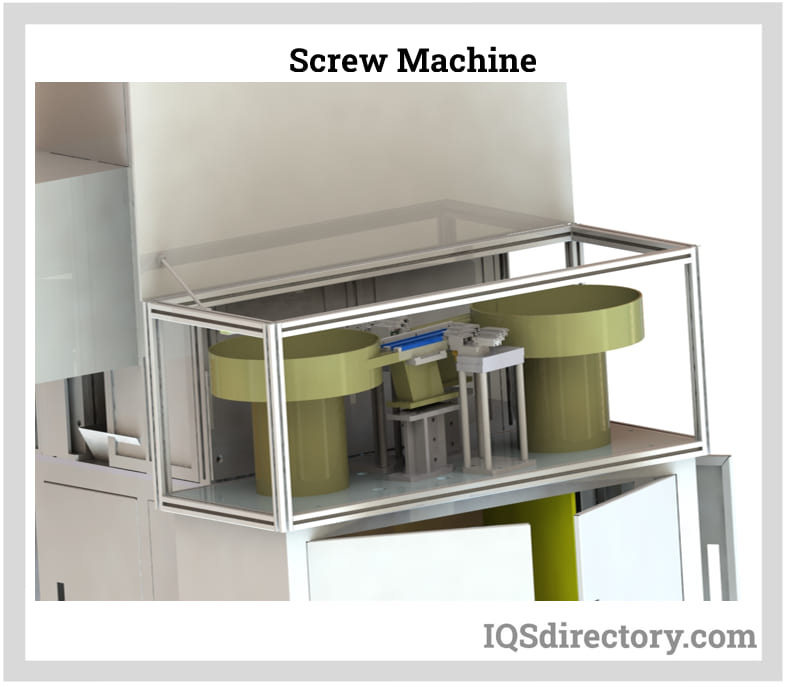
Screw machined parts are complex pieces that are typically cylindrical and threaded and a screw machined product is a family of automatic lathes for small to medium-sized components...
Please fill out the following form to submit a Request for Quote to any of the following companies listed on
This article will provide you with everything you need to know about Swiss screw machining and its uses.
You will learn:
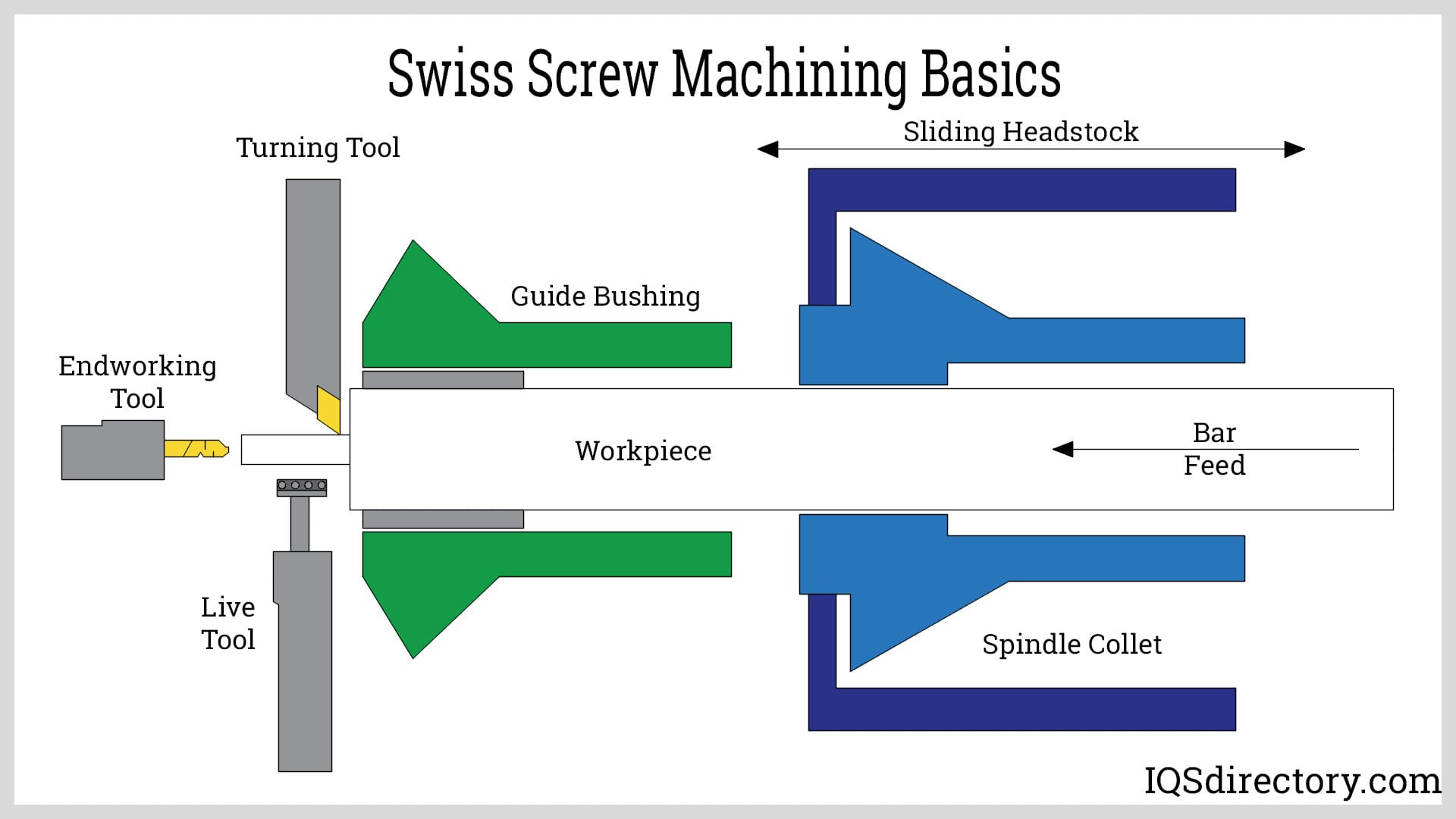
Swiss screw machining is a specialized approach designed for the mass production of precision components using an automated lathe that meticulously manages each cutting action. In contrast to traditional screw machining, Swiss screw machining coordinates the motions of both the workpiece and the cutting tool. This synchronization allows for achieving extremely tight tolerances and efficiently crafting complex, intricate parts.

The process involves subtractive manufacturing principles, where material is precisely removed from the workpiece or headstock through Z-axis motion. A guide bushing supports the bar in front of the turning tools, enabling operators to manipulate and form extended lengths with exceptional accuracy.
Originating during Switzerland’s initial phase of industrialization, Swiss screw machining was developed to assist watchmakers in producing parts for the horology sector. Before its advent, lathe operations were arduous and highly time-consuming, requiring manual manipulation of handles and levers in pursuit of precision metalworking.
Swiss screw machining utilizes a lathe equipped with multiple tool holders positioned around its spindle, accompanied by a coaxially attached tailstock. This process is renowned for its ability to swiftly manufacture small, high-precision parts consistently, free from defects or errors.
While various types of Swiss screw machining exist, they all adhere to fundamental principles that ensure efficiency and productivity. Central to these methods is securely holding the bar stock or workpiece, and enabling the machine to move the tool and workpiece in unison.
Despite the complexity of the parts produced through Swiss screw machining, the process itself is straightforward and comprehensible. Like all machining techniques, Swiss screw machining demands meticulous planning and preparation to uphold the standards of quality and precision in the manufactured parts.
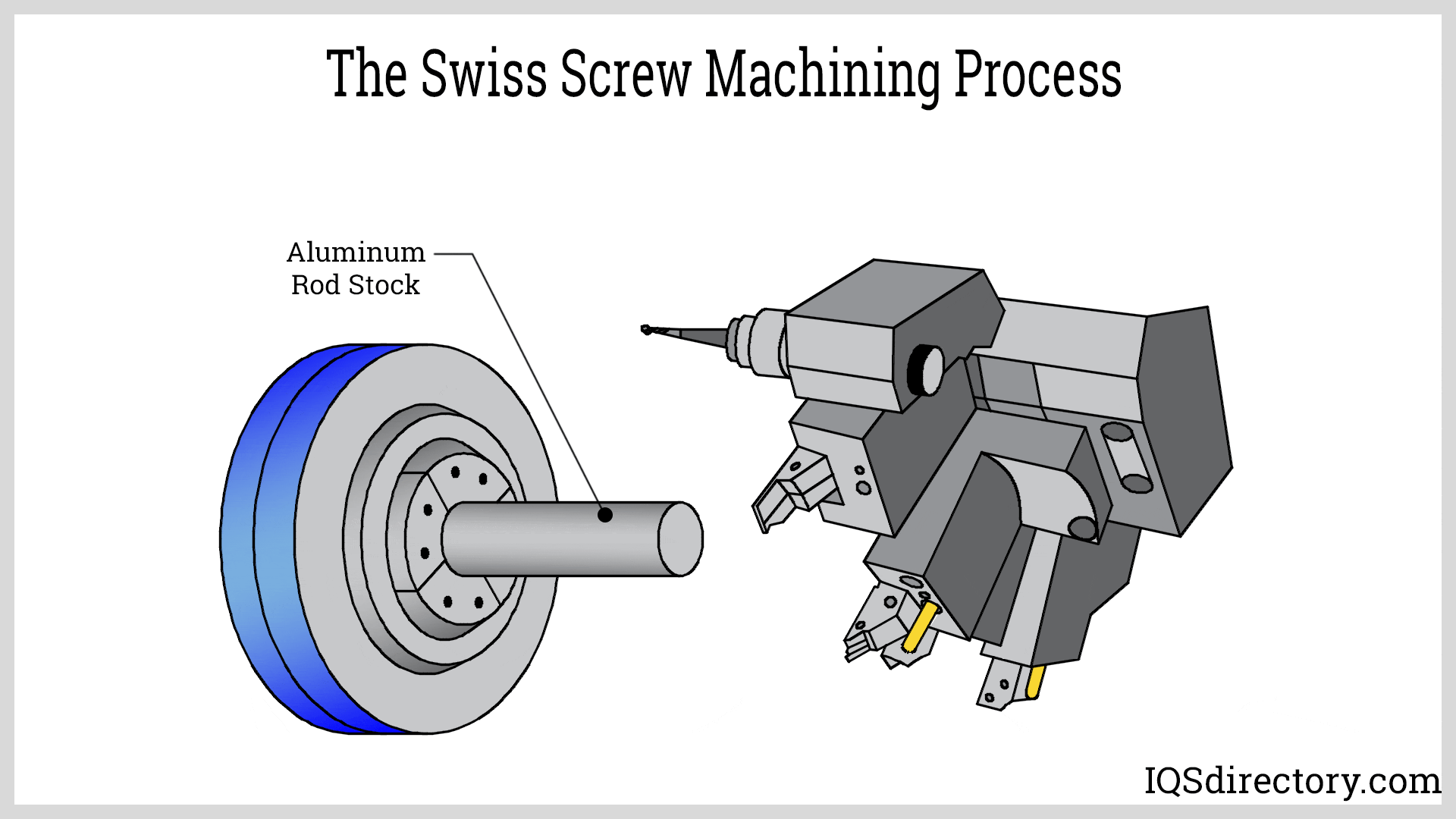
Securely holding the workpiece prevents vibrations or wobbling during rotation. Failure to do so can lead to various issues affecting the spindle, cutting tools, and the precision of the cuts.
There are two types of bar feeders: hydrodynamic and hydrostatic, each differing in how they secure the workpiece as it enters the Swiss screw machining process.
Modern bar feeders represent a significant departure from the original method, where bar feeding was manually performed by the lathe operator, who held the workpiece in position throughout the cutting and shaping process.
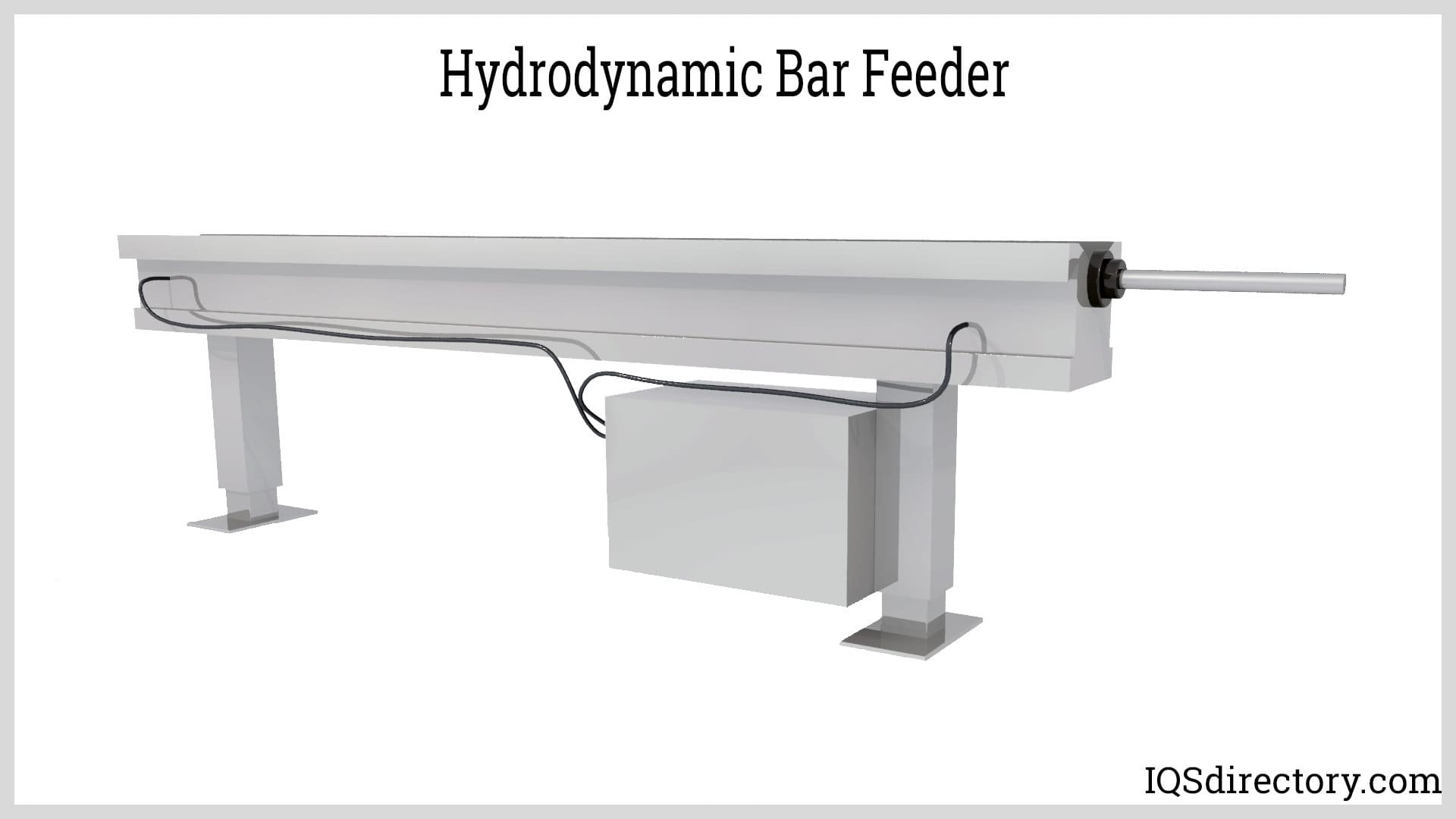
The chucking collet employs mechanical force to securely grip the workpiece and is a standard fixture in Swiss screw machines. It typically consists of a three-jaw power chuck, a hydraulic cylinder, and a drawtube. Positioned on the spindle's front end (the working side), the chuck is connected to a hydraulic cylinder at the rear end of the spindle. A drawtube runs through the spindle bore, linking the hydraulic cylinder to the chuck.The hydraulic piston's axial movement controls the opening and closing of the collet chuck's jaws. As the piston moves back and forth, the drawtube drives a wedge-shaped plunger within the chuck body, converting axial motion into radial motion to operate the jaws. The force exerted by the jaws is regulated by a pressure valve.
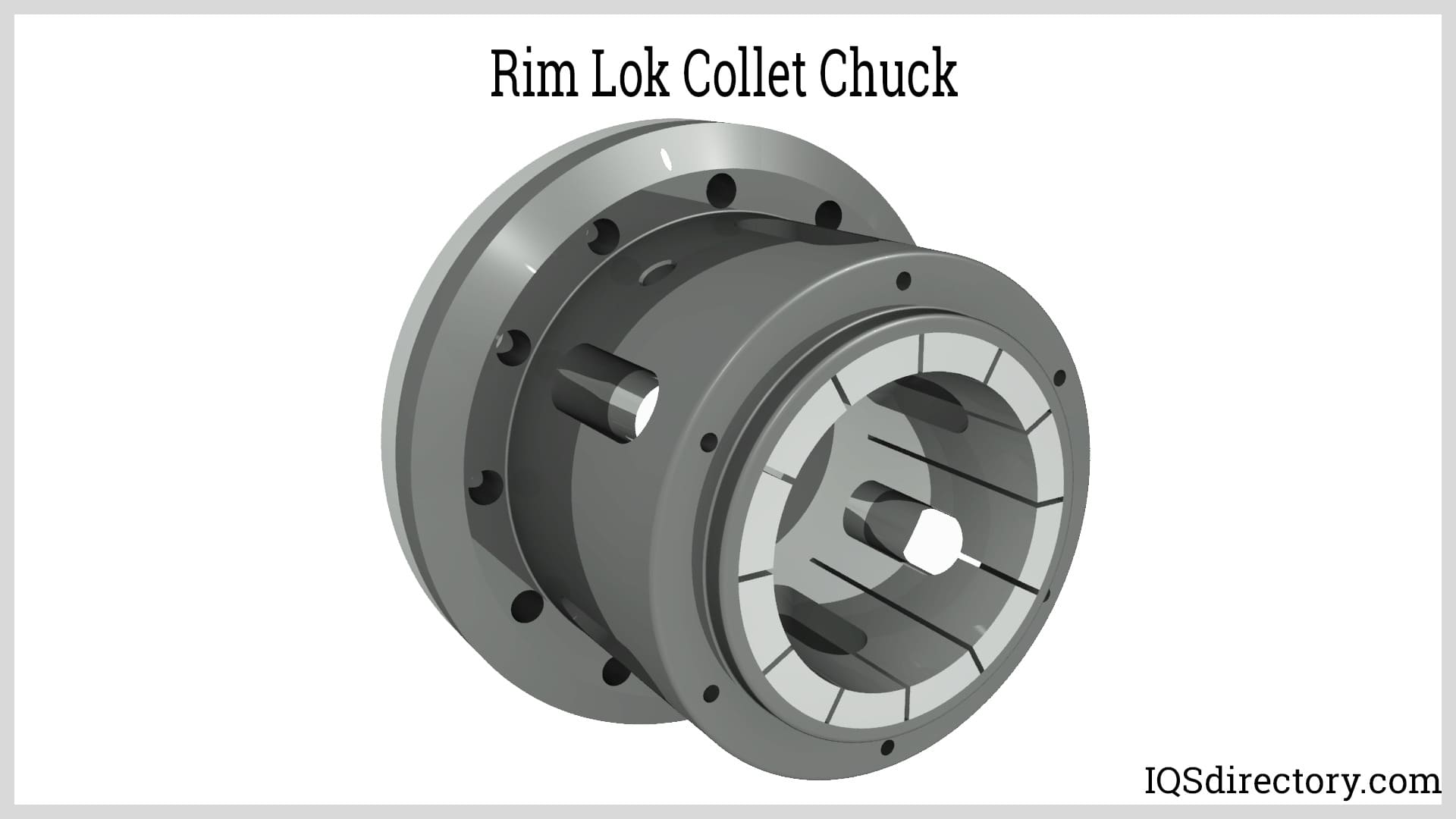
Guide bushings are a critical component of Swiss screw machining, renowned for their exceptional rigidity. They distinguish Swiss screw machines from traditional lathes by supporting the workpiece during machining to prevent deflection when cutting forces are applied. This support enables the cutting tool to make deeper passes with precision, reducing the need for multiple shallow passes and minimizing tool wear.
The precision of guide bushings is measured by their coaxiality, which refers to the tolerance of one cylinder's alignment with another. To achieve micron-level tolerances in Swiss screw machining, guide bushings are manufactured with a precision of 0.0002 inches (0.00508 mm).
Like other components in Swiss screw machining, guide bushings come in several types, with rotary, fixed, and precision being the most common varieties.
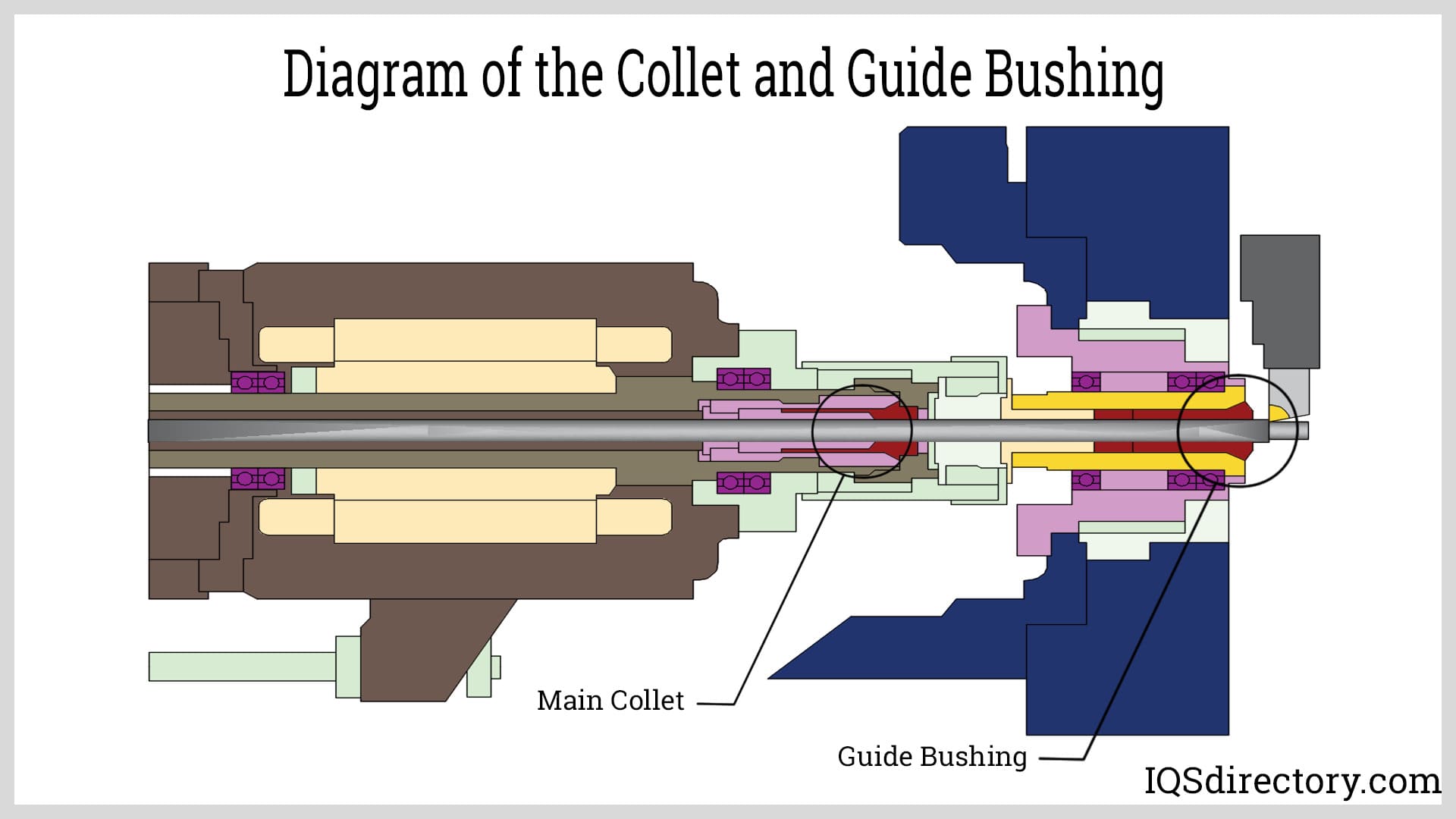
In Swiss screw machining, the headstock is movable along the Z-axis to position the workpiece. The bar stock is fed through a chucking collet which securely clamps onto it. The sliding headstock moves to enable the cutting tool to shape the bar stock. While the collet holds the workpiece, the headstock rotates it to position it precisely for the cutting tool. This movement ensures that the workpiece is brought to the cutting tool, minimizing lateral forces and allowing for exceptionally accurate cuts.
As the headstock moves and rotates the bar stock, the cutting tools engage the bar stock typically within 1 mm to 3 mm (0.0394 in to 0.118 in) from the guide bushing. The sliding headstock's design allows it to expose the section of the workpiece needing machining while keeping the cutting tool stationary, enhancing precision during the cutting process.
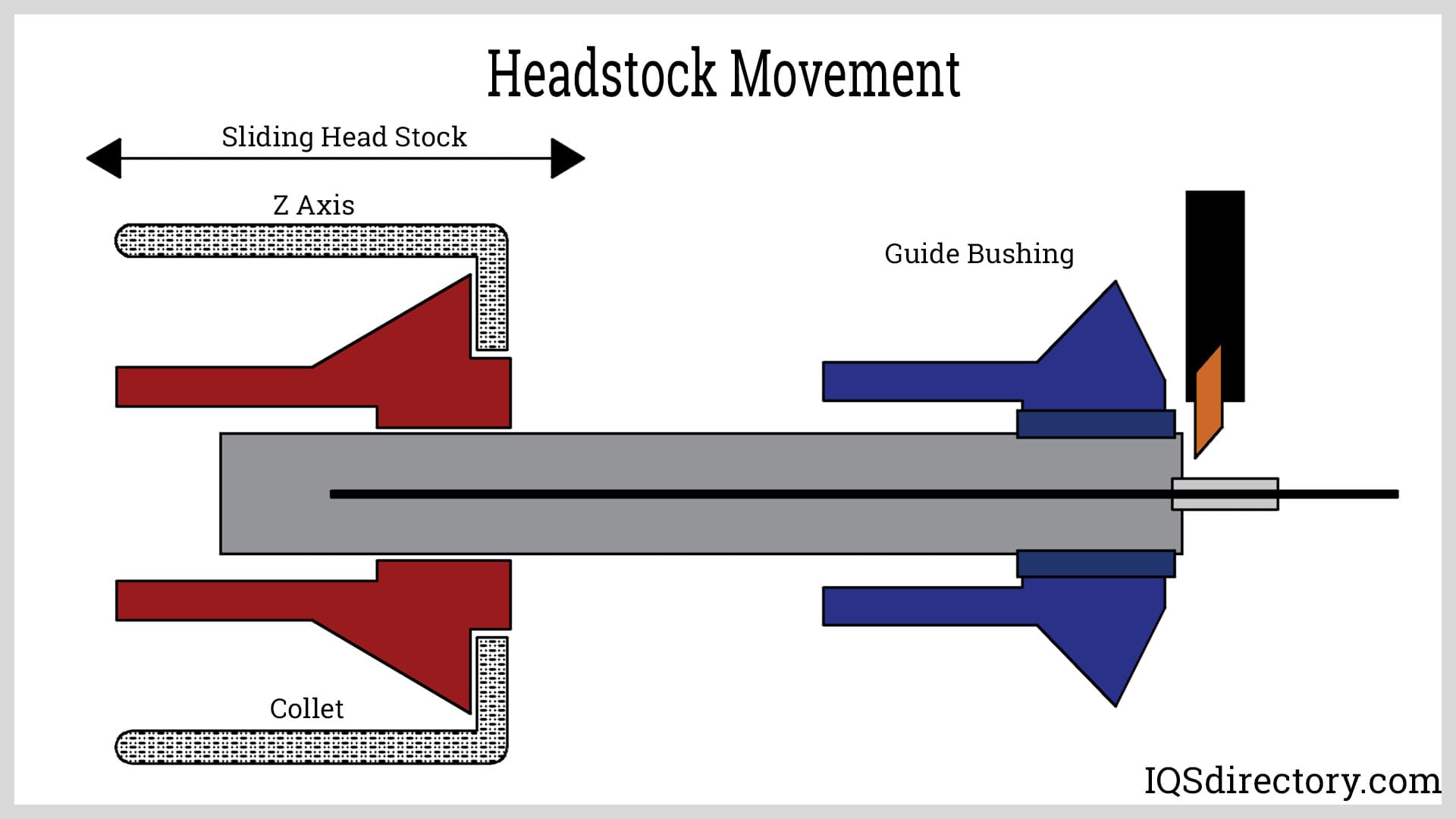
In Swiss screw machining, cutting tools are mounted on one or more spindles, which handle the majority of cutting operations. These spindles accommodate various tools, including holders for fixed single-point tools and other configurations. The tools on the spindle can move along the X, Y, and Z axes to achieve precise cuts and perform single or multiple operations as the workpiece rotates via the headstock. Operations performed by these tools include turning, drilling, milling, threading, and cross drilling. The guide bushing plays a crucial role in ensuring each operation maintains the highest tolerance levels with exceptional precision. This setup allows Swiss screw machines to achieve intricate machining tasks with consistent accuracy.
In a Swiss screw machine, the spindle is situated on the machine bed between the headstock and the feed base. The main spindle handles the majority of cutting operations, while a secondary spindle is responsible for tasks such as drilling and handling finished parts. The spindle serves multiple functions: it supports the workpiece, positions it for machining, and drives the cutting tools. This setup allows for efficient and precise execution of various machining operations, contributing to the versatility and productivity of Swiss screw machines.
There are several types of spindles used in Swiss screw machining, each with unique characteristics for tool positioning. Three common types include direct drive, belt drive, and integrated spindles, each differing in configuration and drive mechanism. These spindle types are essential components in Swiss screw machines, contributing to their operational flexibility and precision in machining tasks.
The primary distinction between traditional machining and CNC Swiss screw machining lies in the design of the headstock. In traditional machining, the headstock is typically fixed and immobile, with the workpiece clamped at both ends. Conversely, in CNC Swiss screw machining, the headstock is movable, allowing for precise repositioning of the workpiece along the Z-axis. This dynamic movement of the headstock enhances the machining capabilities of Swiss screw machines, enabling complex operations with high precision and efficiency.
Traditional CNC machining typically utilizes two, three, or four axes to shape a workpiece. In contrast, CNC Swiss screw machining's verticality allows for shaping along five or more axes, enabling the production of highly complex and intricate parts. One of the key advantages of CNC Swiss screw machining is its capability to perform multiple operations in a single cycle. This eliminates the need for multiple setups and tool changes, streamlining the manufacturing process and enhancing efficiency. This ability is crucial in producing parts with intricate geometries and tight tolerances, making CNC Swiss screw machining a preferred method for complex components in various industries.

For over a century, various types of screw machines have been integral to manufacturing a diverse range of metal components. Swiss screw machining, renowned for its precision, is adept at fabricating bolts, pins, screws, and various fasteners. The exceptional tolerances and accuracy achieved in parts produced by Swiss screw machining have contributed to its widespread adoption. Despite its name suggesting a focus on screws, Swiss screw machining originally derived its name from its early applications but has since evolved to encompass a vast array of uses and applications beyond its initial purpose.
Swiss screw machining is a method for shaping metal parts by securely holding bar stock or a workpiece in place as it is machined from either end or the middle. This process is known for its seamless production capabilities, enabling the high-volume production of precision parts with outstanding repeatability.
There are two primary types of Swiss screw machining: automated and computer numerically controlled (CNC). These methods differ in their design and capabilities but share a commitment to accuracy and efficiency in production. Each type executes machining functions in distinct and unique ways.
Swiss screw automatic machining utilizes automated lathes with tool holders arranged around the spindle and a coaxial tailstock. This cam-operated process inherits all the advantages of traditional Swiss screw machining. It excels in swiftly producing high-precision components. In this automated process, disc cams are crucial for converting rotary motion into vertical or lateral movements, controlling the cutting tools and adjusting the headstock position to accommodate variations in workpiece parallelism. Spindle collets play a critical role by safeguarding against debris and deflection, ensuring uninterrupted machining and protecting against any potential obstacles.
Automatic Swiss screw machining leverages the machine's capability to efficiently produce small parts with high volume, precision, speed, and outstanding quality. While it shares many features with CNC Swiss screw machining, it lacks some of the more advanced technological and computerized functions. This process is versatile, accommodating a range of metals such as brass, aluminum, nickel, bronze, and copper, as well as various types of plastics.
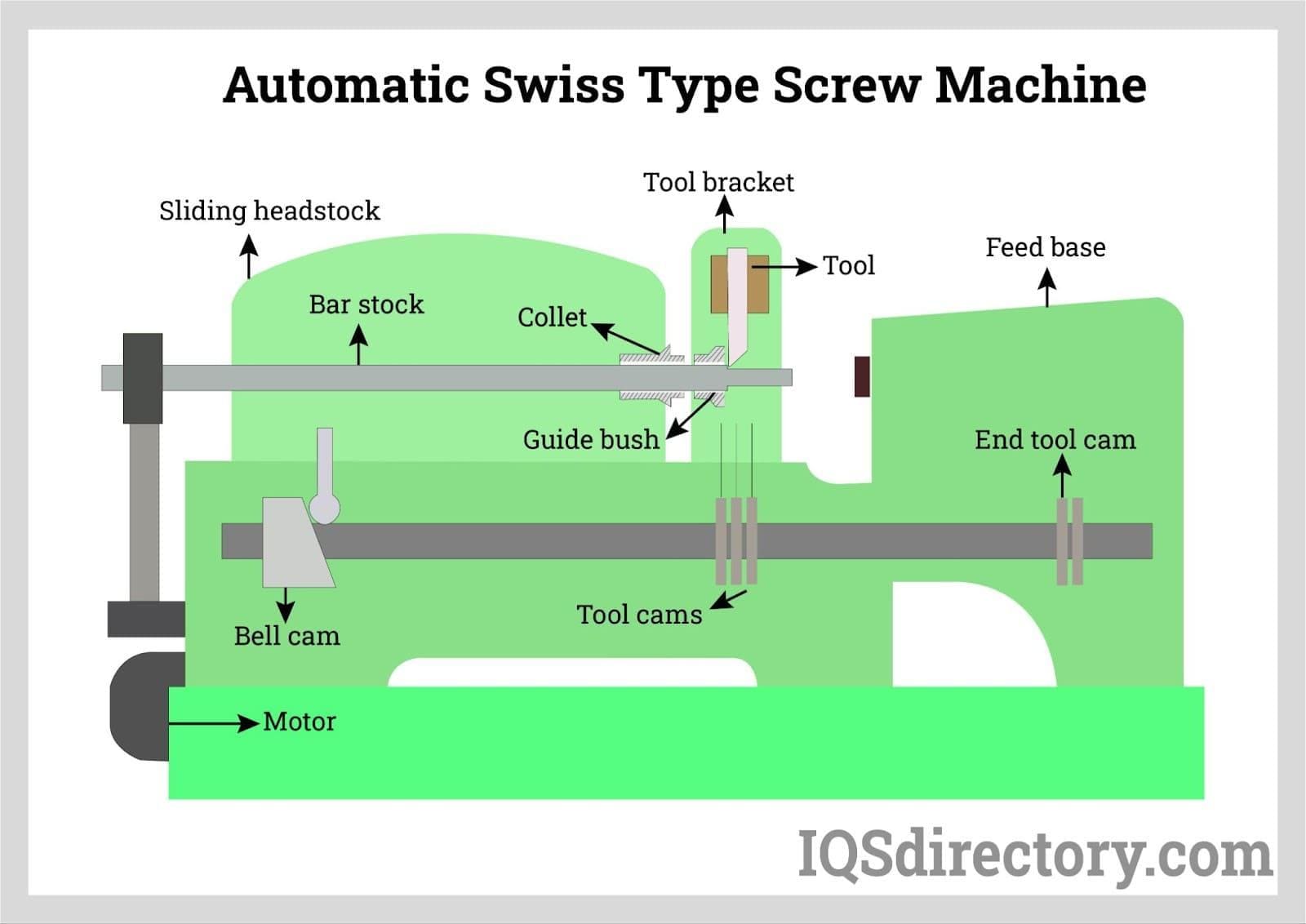
The original Swiss screw machining method was highly automated and precise. However, the introduction of CNC machining in the 1940s elevated the precision, accuracy, and efficiency of Swiss screw machining to unprecedented levels. By combining CNC's digitally controlled tools with the principles of Swiss screw machining, manufacturers gained a powerful methodology for producing high-tolerance parts with exceptional consistency and reliability. This advancement marked a significant evolution in manufacturing capabilities, enabling more complex geometries and stringent quality standards to be met consistently.
Similar to traditional Swiss screw machining, CNC Swiss screw machining operates based on commands inputted via an analog or digital system, which directs the movement of the workpiece and multiple tools. This method ensures precise control and high tolerances in machining operations. The distinct advantage of CNC Swiss screw machining lies in its ability to achieve superior accuracy and tighter tolerances compared to traditional methods. Multiple tools can perform various shaping operations in a single cycle and rapid succession. Additionally, to facilitate complex operations, multiple spindles are often employed, each dedicated to specific functions and tool sets. This capability enhances efficiency and versatility in manufacturing intricate and high-precision components.
The enhanced precision of CNC Swiss screw machining is attributed to the secure grip provided by the collet, which ensures more accurate machining operations. Like other forms of CNC machining, the process begins with the creation of specific codes that dictate various machine functions during each machining task. The structural foundation of CNC Swiss screw machining revolves around the guide bushing, enabling aggressive cuts and specialized cutting cycles within a single operation. This approach, where multiple machining functions are completed in a single cycle, is known as synchronous optimization in CNC Swiss screw machining.
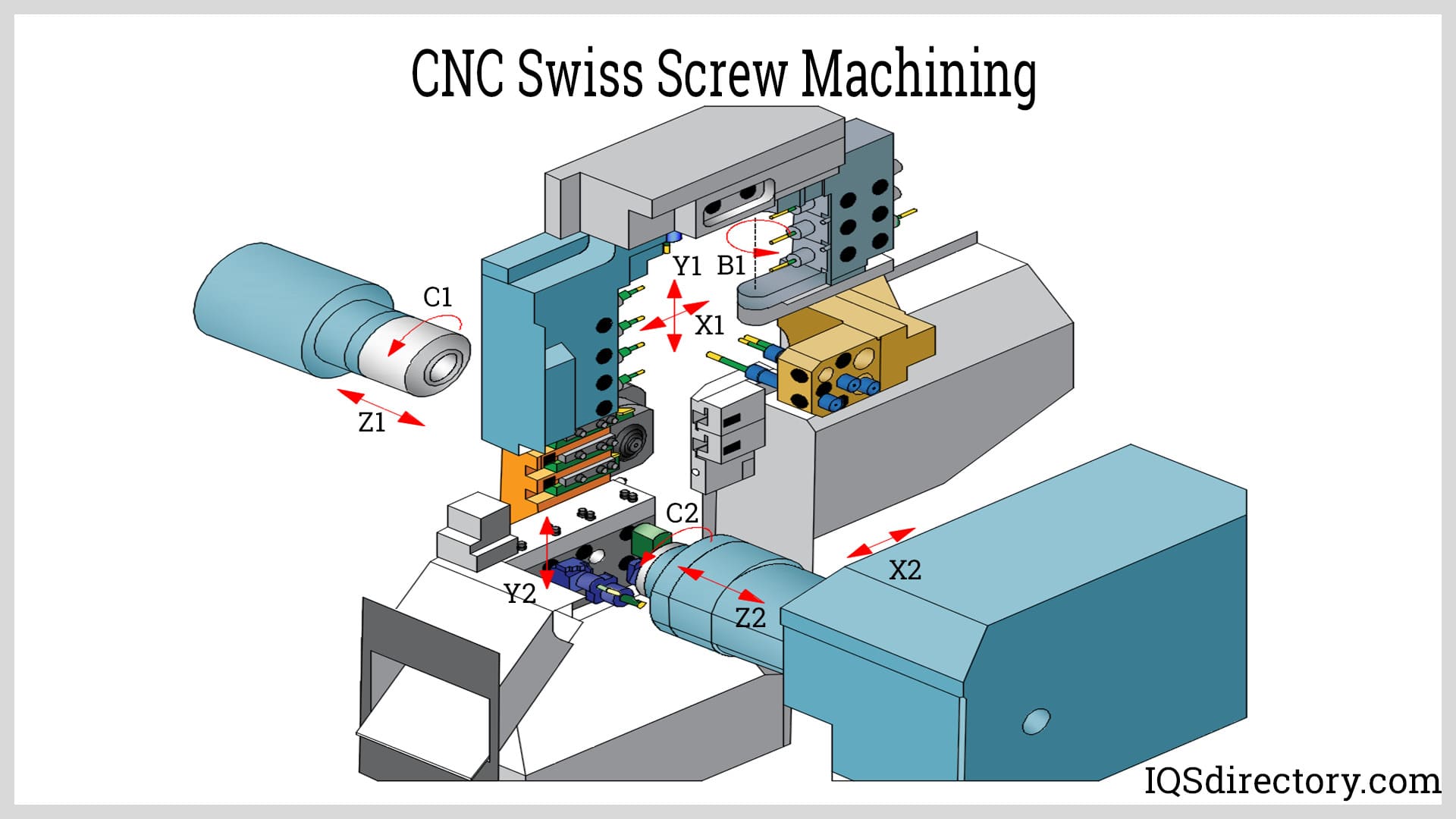
Swiss screw machining stands out by employing a diverse range of cutting tools that achieve precise cuts with exceptional tolerances. At its core, machining involves the subtraction of material from a workpiece to fabricate components, parts, or fasteners. While this process can be carried out using lathes, CNC machines, or other subtractive methods, Swiss screw machines utilize a unique approach that guarantees each cut meets stringent standards of tolerance and precision.
The precision and accuracy demanded by Swiss screw machining necessitate high-quality tools capable of effective material removal. These tools are versatile, performing a wide array of machining operations, including the crucial function of using a parting off tool to separate the final part from the bar stock.
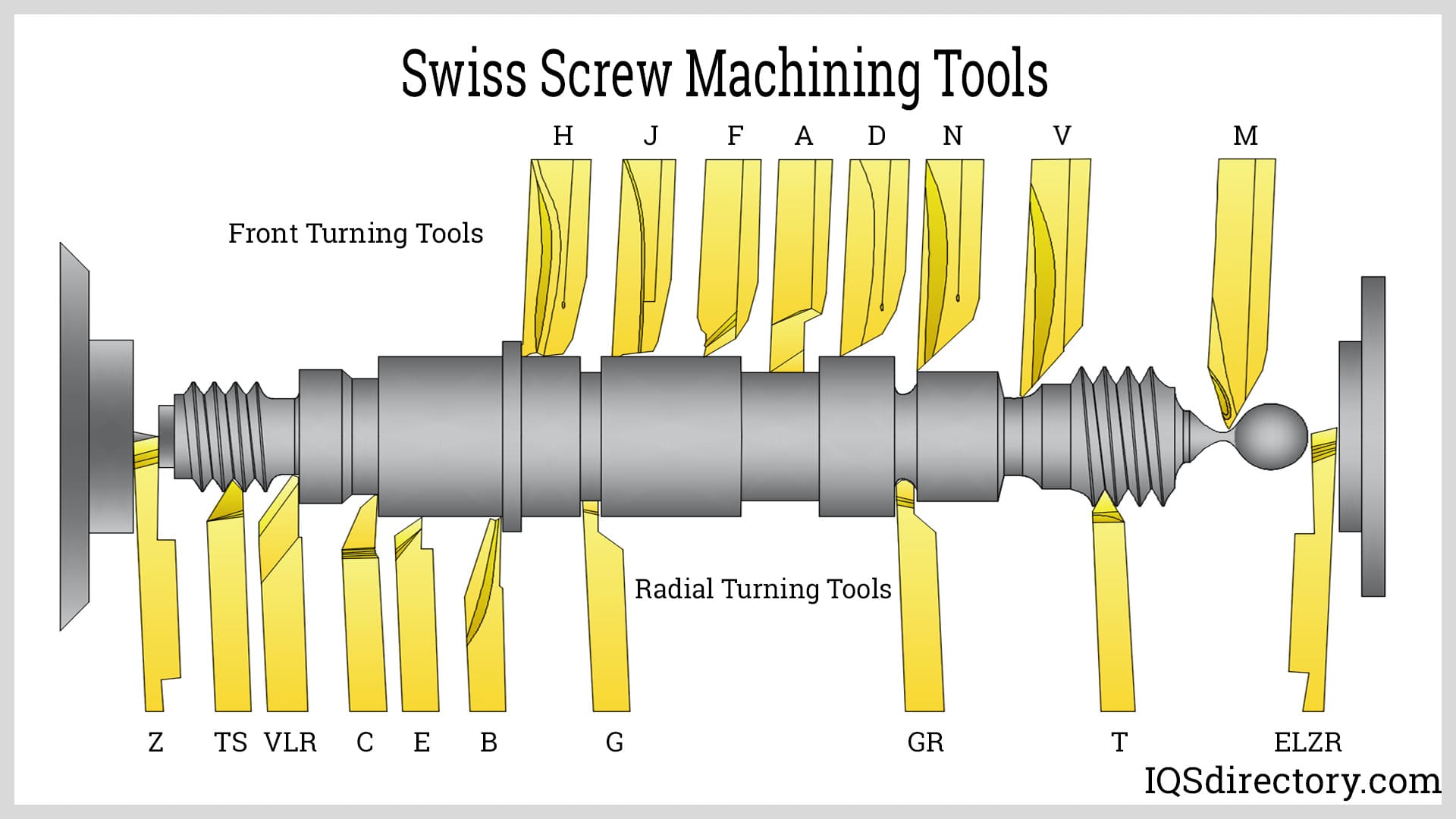
Grooving tools are employed alongside bushing tools in Swiss screw machining to create recesses that maintain rings and necks for joining materials, ensuring optimal performance. This tandem approach involves cutting channels on the face of a workpiece or within an existing bore, known as internal grooving.
Drilling is among the primary functions of Swiss screw machining, involving the use of a cutting and rotating drilling tool to create precise round holes in a workpiece. The exceptional precision of Swiss screw machining ensures that these holes are perfectly aligned for subsequent assembly with other parts and screws. To accommodate various drilling needs, Swiss screw machines are equipped with spindles containing drill bits of multiple sizes, ranging from micro drills as small as 0.1 mm (0.0039 in) to larger bits up to 3 mm (0.118 in). Tungsten carbide steel is commonly used for drilling tools in Swiss screw machining due to its strength and durability.
The chamfering tool, often called a lark’s tongue, is designed to create a smooth curved edge on parts. This process not only enhances safety by eliminating sharp edges but also prevents damage to other components during assembly. Also known as a chamfer mill or chamfer cutter, this tool features a head similar to a drill point and can perform multiple functions besides chamfering, such as beveling, deburring, spotting, and countersinking. The versatility of chamfering tools makes them indispensable in Swiss screw machining processes.
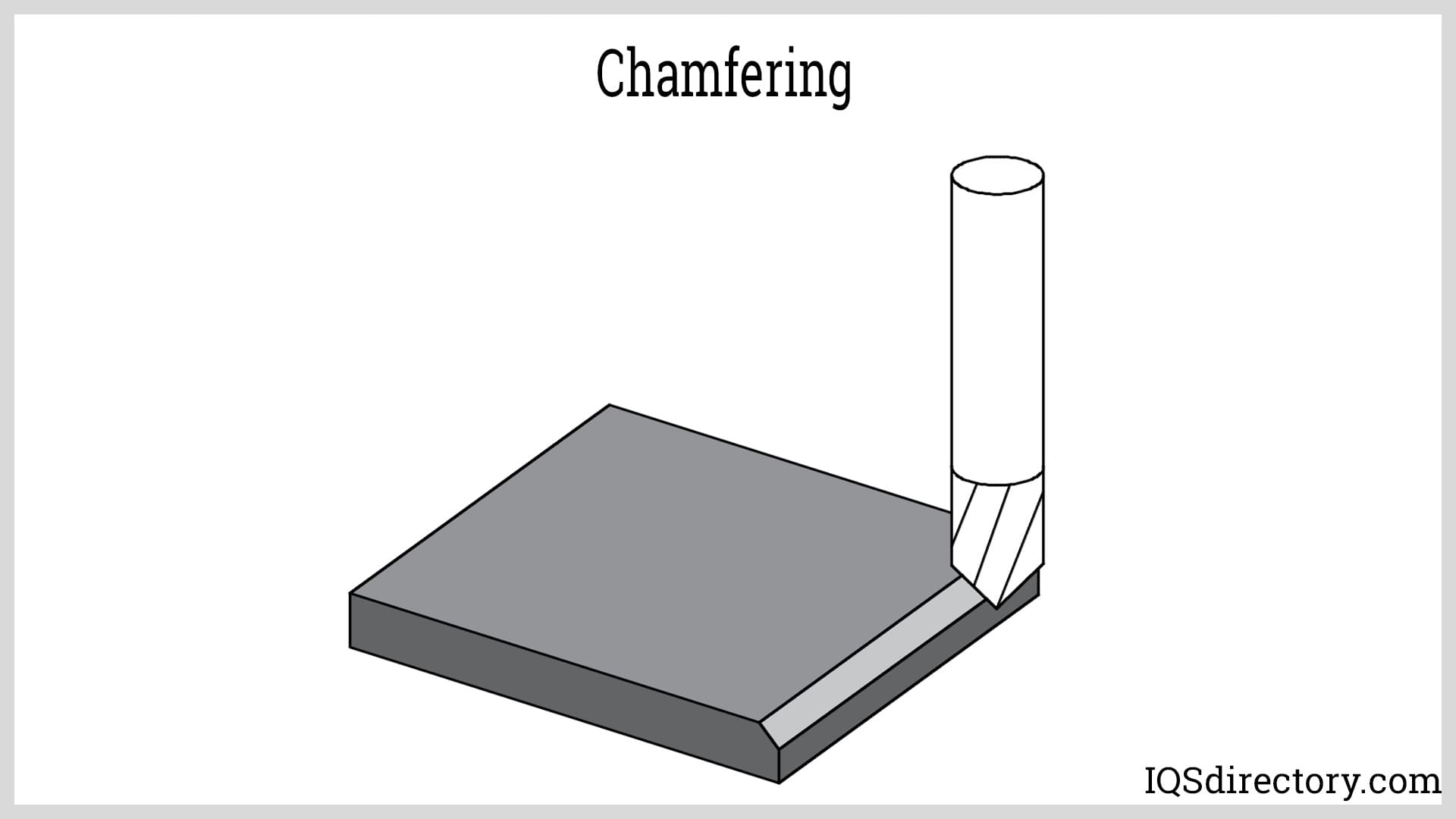
Turning tools in Swiss screw machining serve dual functions based on the needs of the workpiece. A rough turning tool is employed to remove substantial amounts of material, shaping the workpiece to achieve a desired form. Conversely, a fine turning tool is used for finishing, delicately removing minute amounts of material with precision to meet exact part designs and tolerances.
Threading tools in Swiss screw machining come in two main forms: single point threading tools and drill-type threading tools. Single point threading tools use a single cutting point to create ridges and troughs along the length of the workpiece, forming external threads. Meanwhile, drill-type threading tools are designed for cutting internal threads. Another type of threading tool is thread whirling, which employs a series of cutting heads mounted in a ring or holder. As the workpiece rotates, the thread whirling tool spins, creating ridges on the workpiece to form threads.
The parting tool serves as the final step in Swiss screw machining operations. Available in various shapes, cutting mechanisms, designs, and methods, all parting tools share the common function of separating the completed component from the bar stock. Because of the demanding nature of this task, parting tools are typically crafted from exceptionally robust and durable materials, often using high-strength steel.
Indexing is a critical process in Swiss screw machining that involves positioning a cutting tool at the correct angle and location to execute a specific operation. This precise positioning enables Swiss screw machines to cut symmetrical and repeating patterns with exceptional precision and accuracy. Clamping plays a vital role in indexing by allowing tools to be indexed from the back side of the tool holder without needing to remove the tool or holder. This method speeds up tool changes, enhances production rates, and prevents damage to the cutting edge of the tool.
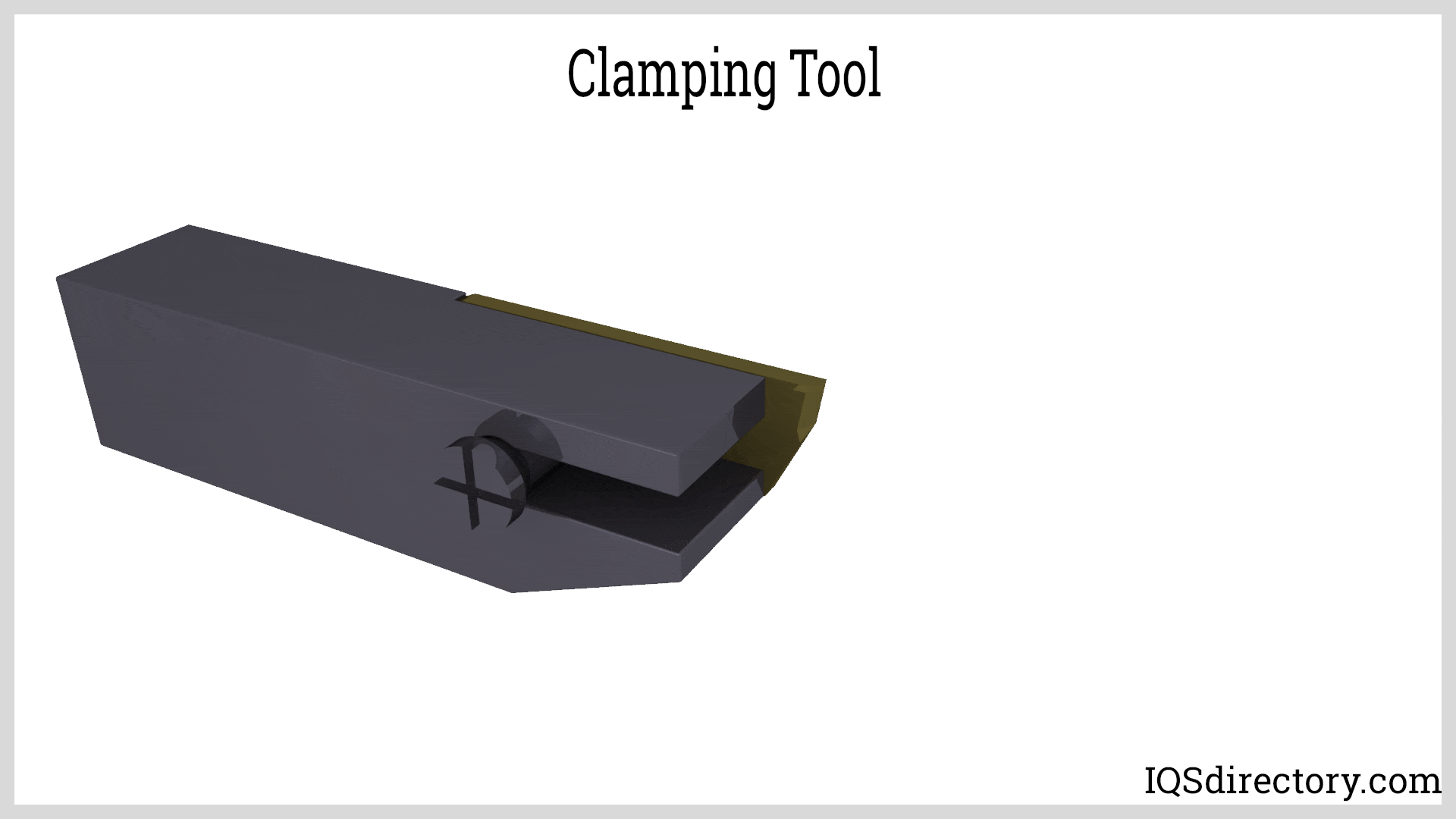
The tools mentioned above represent only a small fraction of the extensive array used in Swiss screw machining. Beyond the commonly known and widely used tools, there exist numerous custom-made machining tools tailored for unique and specialized components. Moreover, as new products emerge, Swiss screw machining tools are continually developed to meet evolving requirements and accommodate diverse part configurations. This adaptability ensures that Swiss screw machining remains versatile and capable of meeting the demands of modern manufacturing.
What types of materials can be shaped and cut using the Swiss screw machining process? The range includes various plastics, non-ferrous metals, and ferrous metals, each handled with meticulous care and precision. Swiss screw machining's versatility in shaping diverse materials contributes to its widespread use across industries.
Aluminum is highly favored for Swiss screw machining due to its excellent strength-to-weight ratio, numerous alloy options, and versatile properties. Its inherent ductility allows for machining into a wide range of intricate and complex shapes. This makes aluminum a popular choice for manufacturing automotive and aircraft components and parts.
Brass, an alloy of copper, is renowned for its strength and rigidity, making it ideal for manufacturing components with precise tolerances. Its popularity in Swiss screw machining stems from its conductivity, corrosion resistance, and cost-effectiveness. Brass is prized for its excellent finish and aesthetic appeal, enhancing the quality of components produced with it.
Swiss screw machining is chosen for shaping and forming plastics when parts cannot be effectively cast or molded, requiring very precise tolerances. It excels in swiftly creating plastic prototypes and manufacturing final components. Certain manufacturers specialize in crafting high-precision plastic parts from plastic sheets, necessitating meticulous processing techniques.
Machining carbon steel demands robust, durable, and precise equipment capable of withstanding the stresses involved. Swiss screw machining is uniquely suited for this task, minimizing tool wear while machining steel. This method utilizes the movement of the workpiece relative to the tools, which helps preserve tool longevity during shaping processes. Swiss screw machining is particularly efficient in producing a variety of components such as shafts, screws, bolts, connectors, sockets, bushings, and brackets from carbon steel.
Similar to aluminum, nickel alloys are selected for Swiss screw machining because of their excellent corrosion resistance. Components manufactured from nickel alloys exhibit high stiffness and structural integrity. The surface finish of nickel alloys is particularly advantageous, allowing these components to be used visibly in assemblies without compromising their appearance. This makes nickel alloys well-suited for applications where both performance and aesthetics are critical.
Stainless steel possesses essential qualities for components exposed to hazardous and hostile environments. Combining the strength of steel with an oxide coating that shields against corrosion, stainless steel ensures durability under challenging conditions. Its versatility is underscored by a diverse range of alloys that can be tailored, shaped, and formed to suit various applications. Components crafted through Swiss machining from stainless steel can undergo additional treatments to further augment their robust properties.
Titanium is favored in Swiss screw machining for its lightweight nature, corrosion resistance, and ductility. It can be cut, formed, milled, drilled, and fabricated into intricate dimensional parts without sacrificing its inherent strength, durability, or structural integrity. Titanium offers comparable strength to steel but with lower density, making it ideal for producing robust components that need to minimize weight. Like many metals, titanium is available in various grades selected to precisely match the requirements of specific applications.
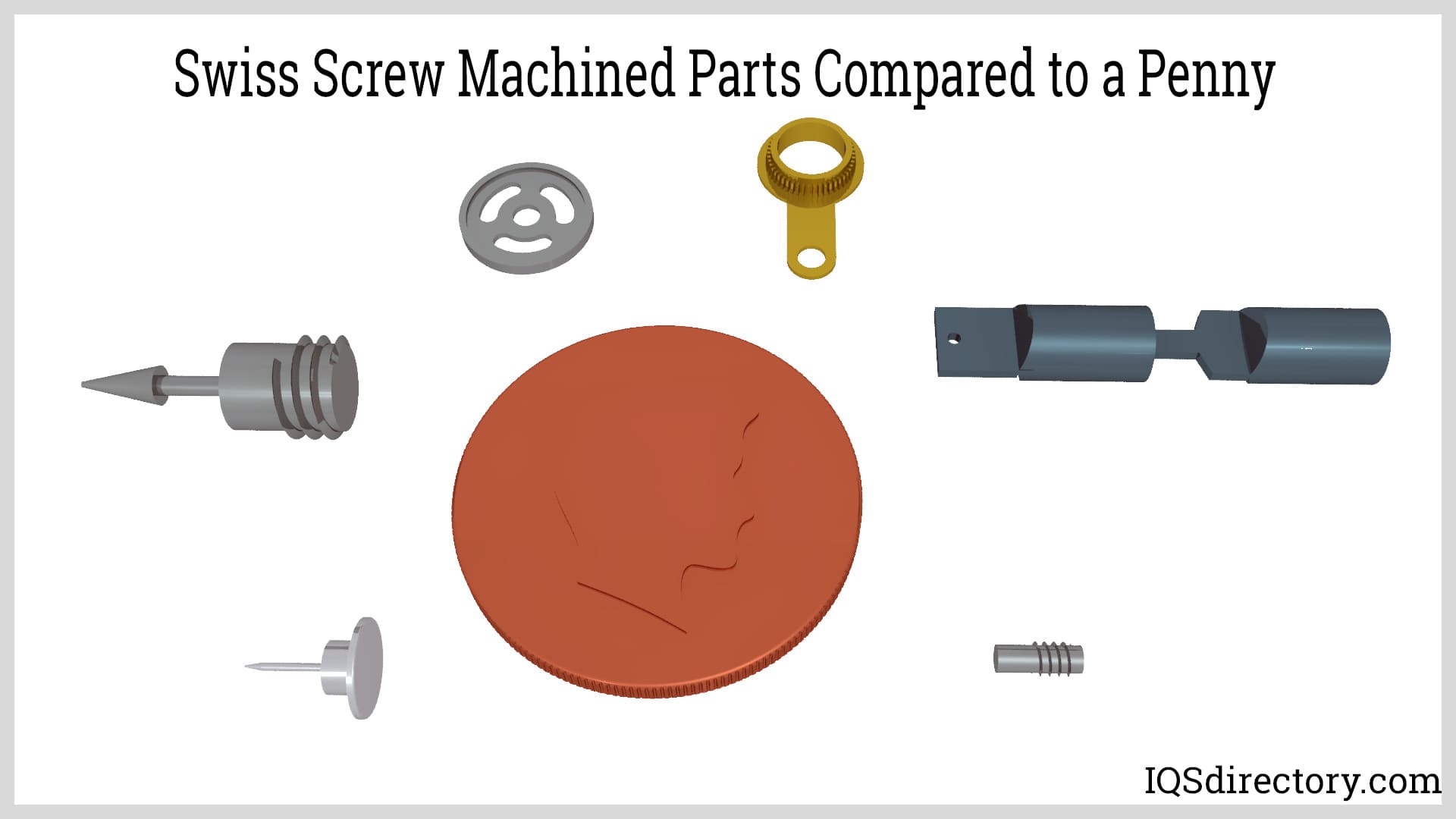
When an assembly demands precision parts manufactured to the tightest tolerances, Swiss screw machining is the preferred choice. Its capability to swiftly and accurately produce parts ensures adherence to exact specifications. Modern manufacturing emphasizes quality and durability, where precision is crucial for longevity and reliability. CNC Swiss screw machining meets these standards, fulfilling the rigorous criteria essential for contemporary product requirements.
Plow studs, essential components in road plows and off-road vehicles, serve various functions such as attaching plow blades to the plow's underside, securing bucket teeth on excavators, and anchoring wear-resistant blocks and side cutters. These studs, also referred to as plow bolts, come in several configurations tailored to specific applications.
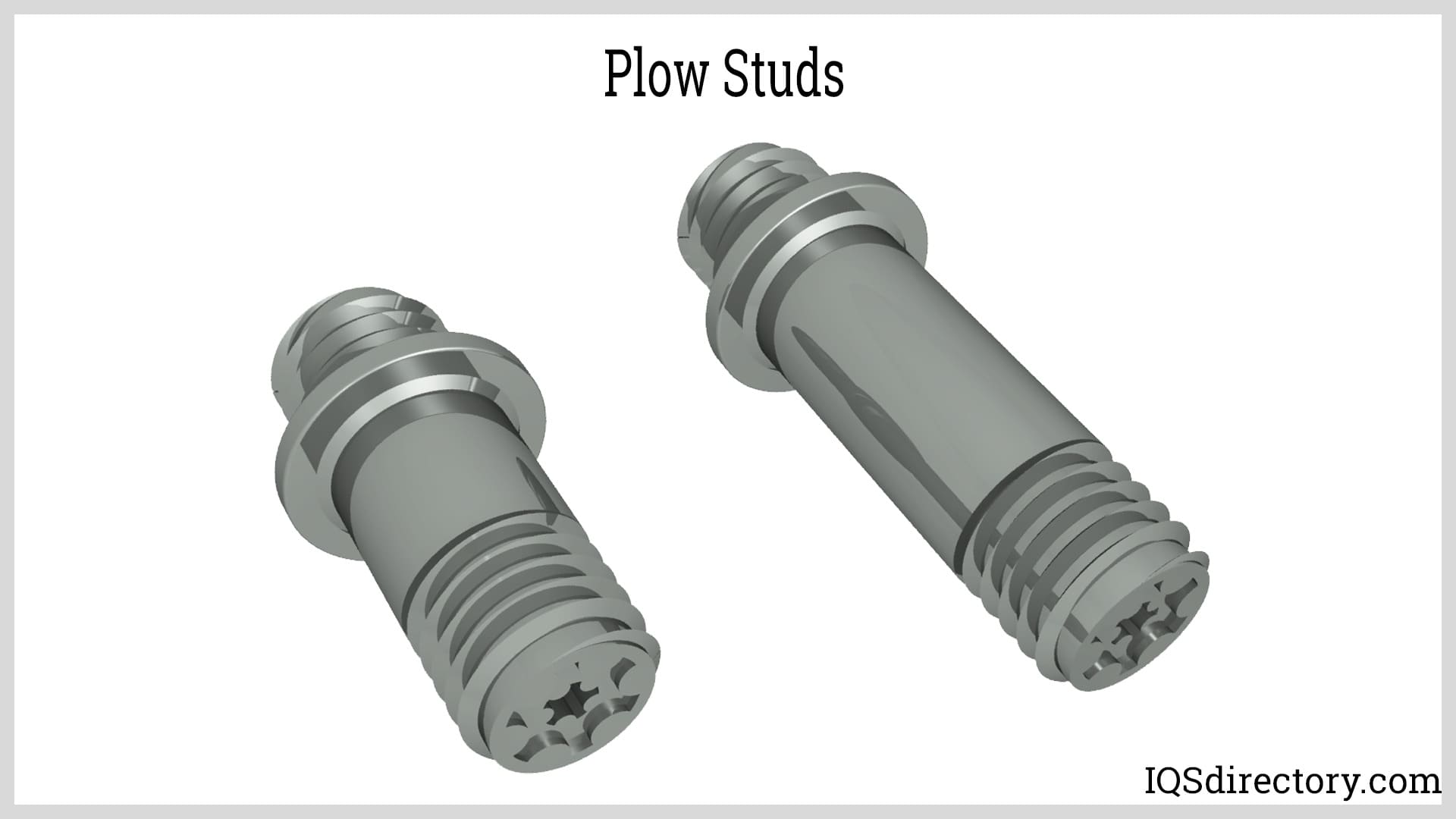
Swiss screw machining is chosen for gear production because of the intricate precision required to cut gears with accurately shaped teeth for proper meshing. Gears are manufactured in countless types and materials, ranging from basic plastics to robust steels, to meet diverse application needs. Gears play a critical role in converting motion in every machine, assembly, motor, or engine. Swiss screw machining excels in producing gears of all types, sizes, and configurations efficiently.

A banjo bolt is a specialized hollow bolt with a flanged head and lateral holes along its shaft. It forms part of a banjo fitting designed for the transmission of pressurized fluids. The holes in the banjo bolt facilitate the flow of fluids to other components of the fitting. The hollow tube nut of a banjo bolt is typically crafted from durable materials like steel or brass to withstand the continuous flow of liquids.
Bushings act as cushions between metal components to minimize noise, mitigate rough movements, and control vibrations. They come in various designs tailored to diverse conditions, applications, and assemblies. Swiss screw machining is particularly well-suited for producing these numerous types of bushings, whether they require side holes, internal or external threads, or are made from highly durable metals.
Originally designed for producing screws and bolts, Swiss screw machining remains ideal for these tasks due to its ability to rapidly and precisely manufacture components of exceptional quality. The process excels in producing screws and bolts quickly while meeting the tightest tolerances, offering a level of efficiency and accuracy unmatched by other methods.

The rapid adoption and widespread use of Swiss screw machining are largely attributed to its precision and accuracy. While these are crucial advantages, they are not the sole reasons why Swiss screw machining is ideal for producing parts with tight tolerances. Since its introduction, many companies have discovered how the process not only improves product quality but also enhances overall manufacturing efficiency.
When discussing Swiss screw machining, the term that inevitably comes to mind is "precision," which succinctly defines the process. Over the years, Swiss screw machining has impressed manufacturers with its exceptional tolerance and unmatched accuracy, setting it apart from other machining methods. This advanced technique, ahead of its time, continues to excel in contemporary production environments.
Swiss screw machining's flexibility and versatility allow it to create parts and components with a complexity that other methods often cannot achieve. Although other techniques can produce similar items, they typically involve higher time and labor costs, leading to increased final product expenses. Swiss screw machining, on the other hand, excels in producing high volumes of intricate parts efficiently, thereby reducing both production and overall costs.
Swiss screw machining is capable of working with a diverse range of plastics and metals to produce highly precise products and components. CNC Swiss screw machining, in particular, offers remarkable adaptability; it can be easily set up to manufacture one type of product and then swiftly reconfigured to produce a different one. This flexibility enables clients to choose various materials and quickly produce multiple components, streamlining the manufacturing process.
Swiss screw machining utilizes a unique approach by positioning the bar stock or workpiece closer to the cutting and shaping tools. In conventional machining, the workpiece often bends or deflects due to its orientation relative to the cutting tool. However, in Swiss machining, this close proximity reduces deflection, thereby enhancing the overall accuracy of the process.
Swiss screw machining can run continuously for hours once it is configured and loaded, minimizing the need for operator intervention. This allows components to be completed in a single pass without requiring tool changes or adjustments, which reduces production costs and enhances efficiency.
Unlike traditional CNC machines or lathes, which may have a limited number of cutting tools, CNC Swiss screw machining features multiple spindles that allow for a large number of tools to be used simultaneously. This capability enables the simultaneous shaping of a component with greater efficiency, enhancing performance and boosting productivity.
Among the many features of Swiss screw machining, its exceptional control stands out as a key reason for its popularity. Originally developed to produce minute components for watches, Swiss machining was designed to achieve the precise control needed for the intricate fit and design of these timepieces. As innovations in Swiss screw machining have evolved, its ability to precisely control tool movement has continued to drive its widespread adoption and acclaim.
The effectiveness of Swiss screw machining, despite its many advantages, relies heavily on meticulous preparation to meet production goals. Given that Swiss screw machining is tailored for intricate work, it’s essential that the preparation process also pays close attention to detail. Proper preparation aims to ensure a smooth workflow, which in turn saves costs and boosts productivity.
The initial stage of producing a part for CNC Swiss screw machining starts with a detailed computer-aided design (CAD). This CAD model must be clear and precise to ensure that the operator can accurately provide the necessary dimensions, tolerances, and surface finishes. This step is crucial as it sets the foundation for the entire machining process.
Hole designs should be simple and straightforward to facilitate easier processing. Complex hole designs can be challenging for CNC Swiss screw machining, making it essential to keep hole features as uncomplicated as possible.
In Swiss screw machining, the corners created by the tools are typically programmed to be smooth and rounded. While sharp inner corners can be produced, they pose a challenge for the machine's tools and may require more complex programming and precision.
As machining tolerances become more stringent, the time Swiss screw machining spends on a part also increases. This extended processing time leads to higher costs and longer cycle times.
Wall thicknesses must be carefully designed to prevent issues such as metal chattering and warping. Thin walls can compromise the quality and accuracy of a part, so it's crucial to strike a balance between aesthetics and functionality to ensure the component performs well and meets design specifications.

Screw machined parts are complex pieces that are typically cylindrical and threaded and a screw machined product is a family of automatic lathes for small to medium-sized components...
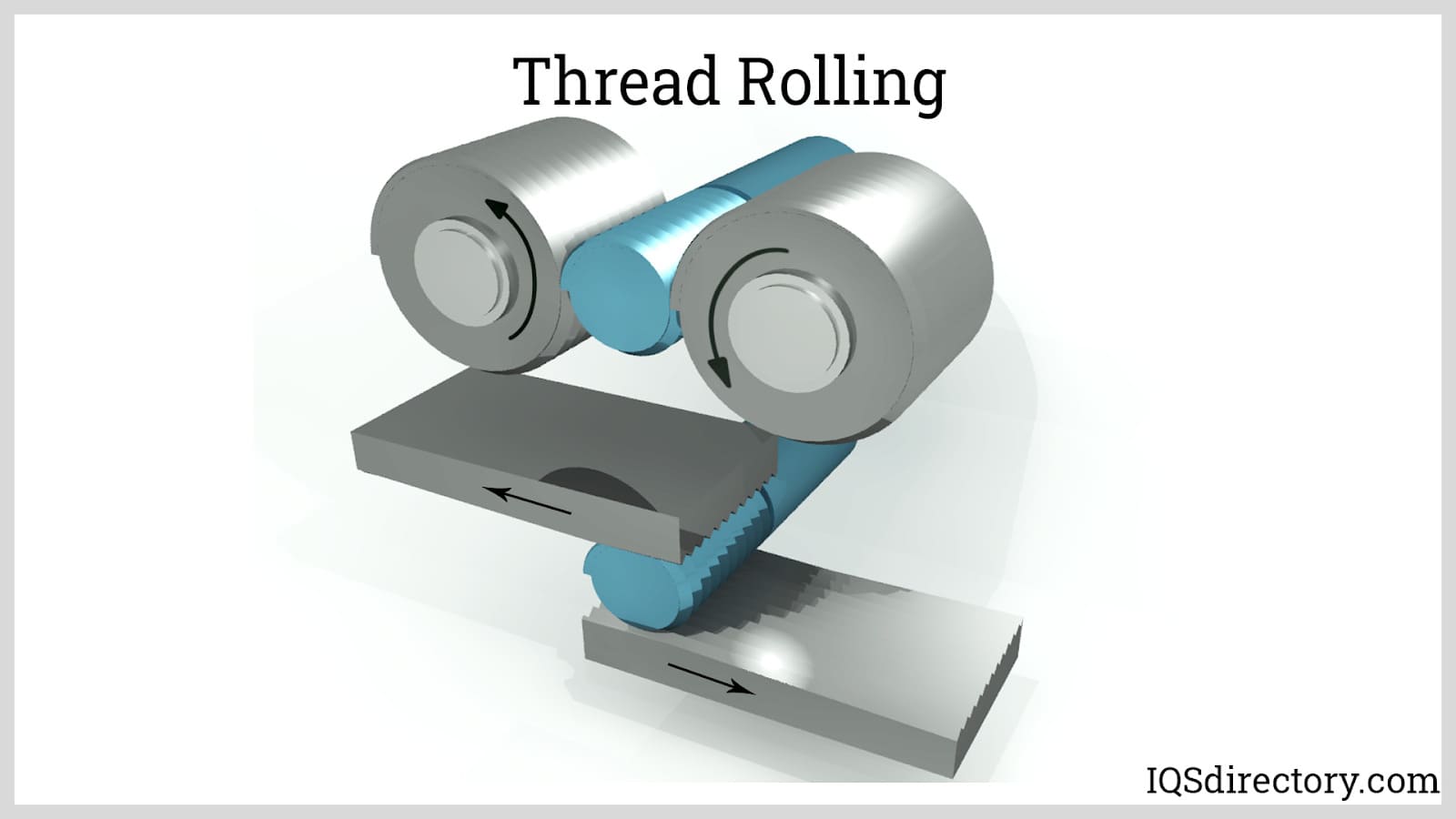
Thread rolling is a type of threading process which involves deforming a metal stock by rolling it through dies. This process forms external threads along the surface of the metal stock...
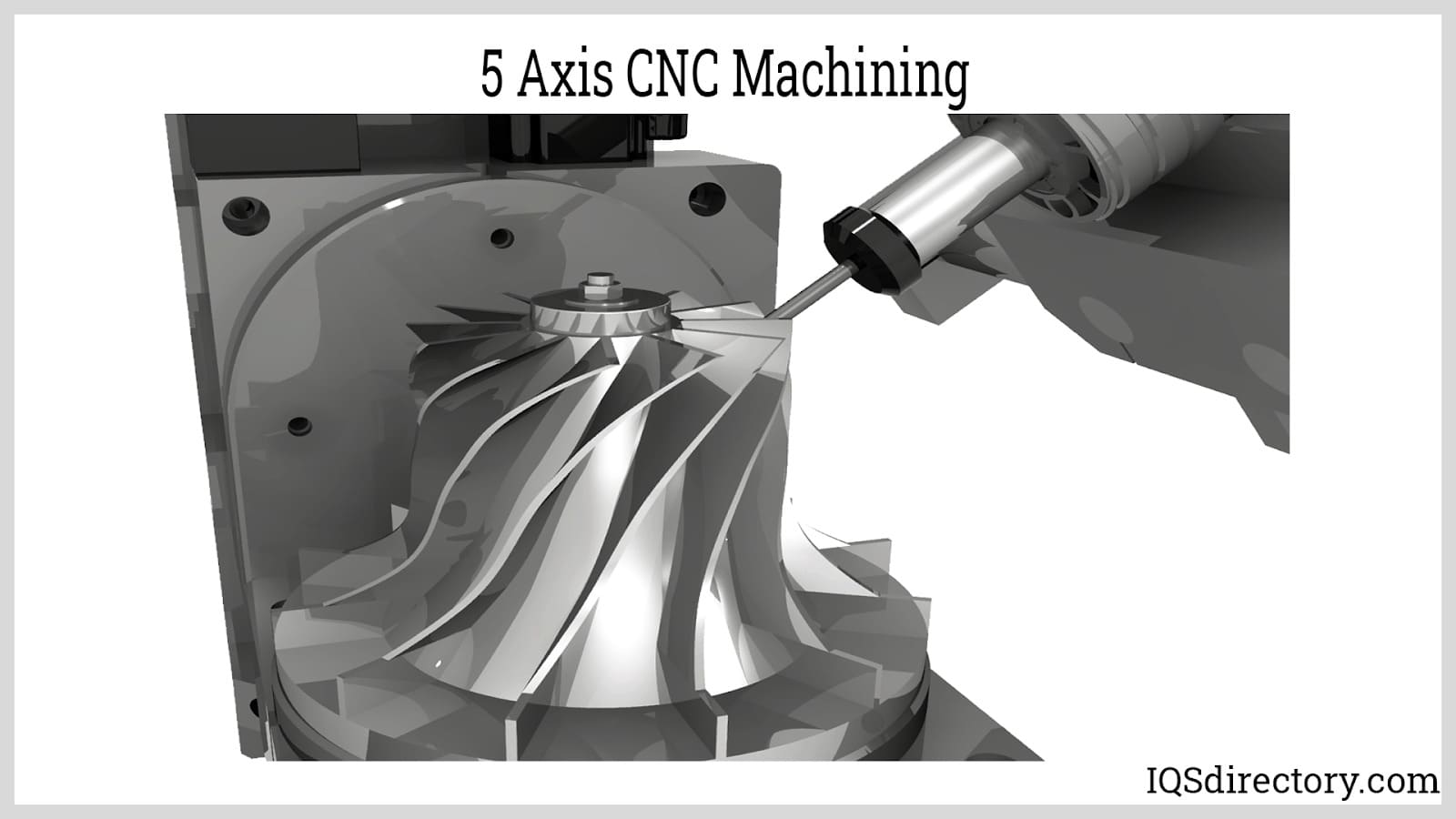
The normal functioning of CNC machines is done along the three Z, X, and Y axes. The five axes machines have two more axes accessible, which are namely A and B. The addition of the two extra axes makes it easy to cut complex and intricate parts...
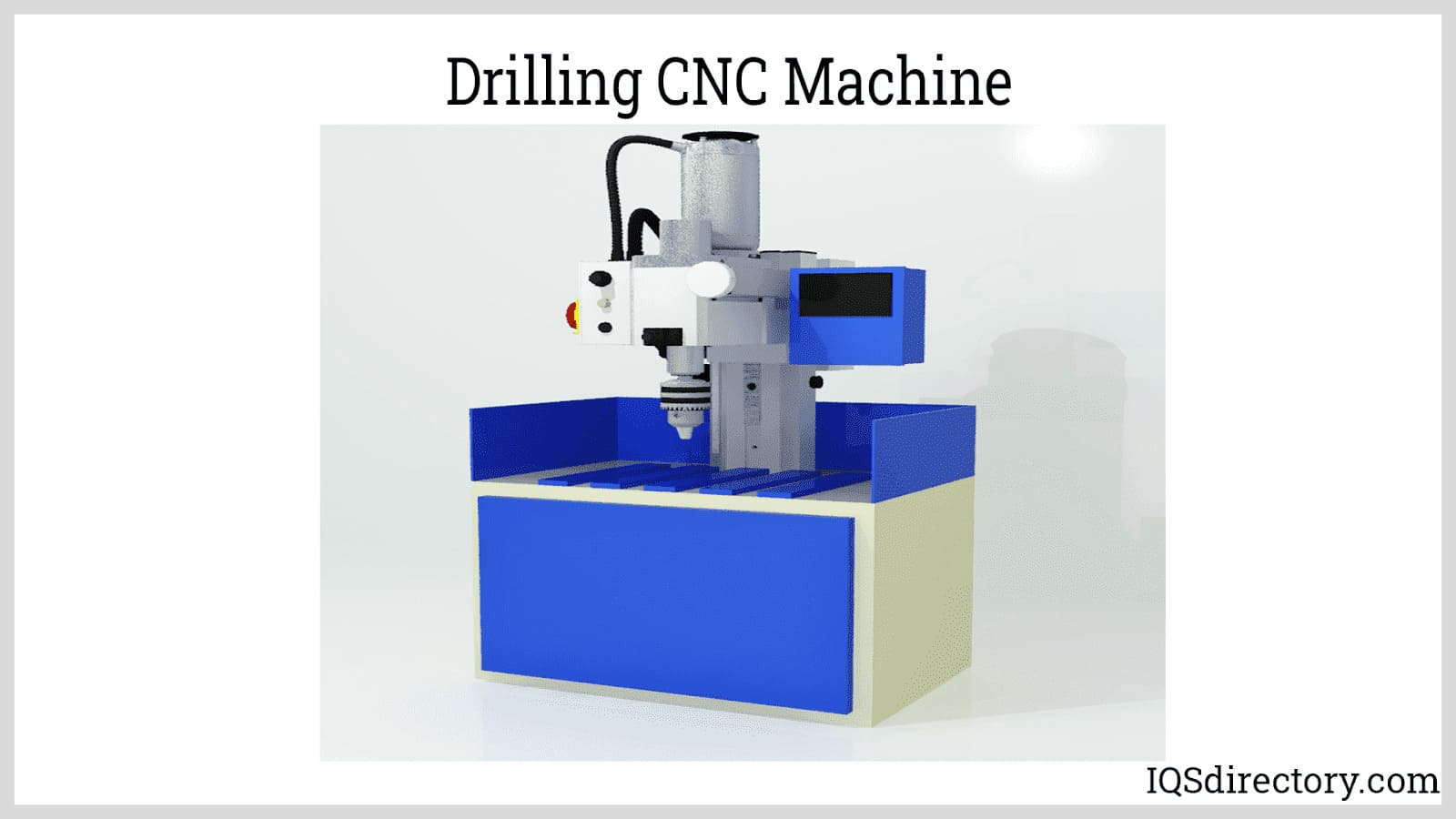
CNC machining is an electromechanical process that manipulates tools around three to five axes, with high precision and accuracy, cutting away excess material to produce parts and components. The initial designs to be machined by CNC machining are created in CAD...
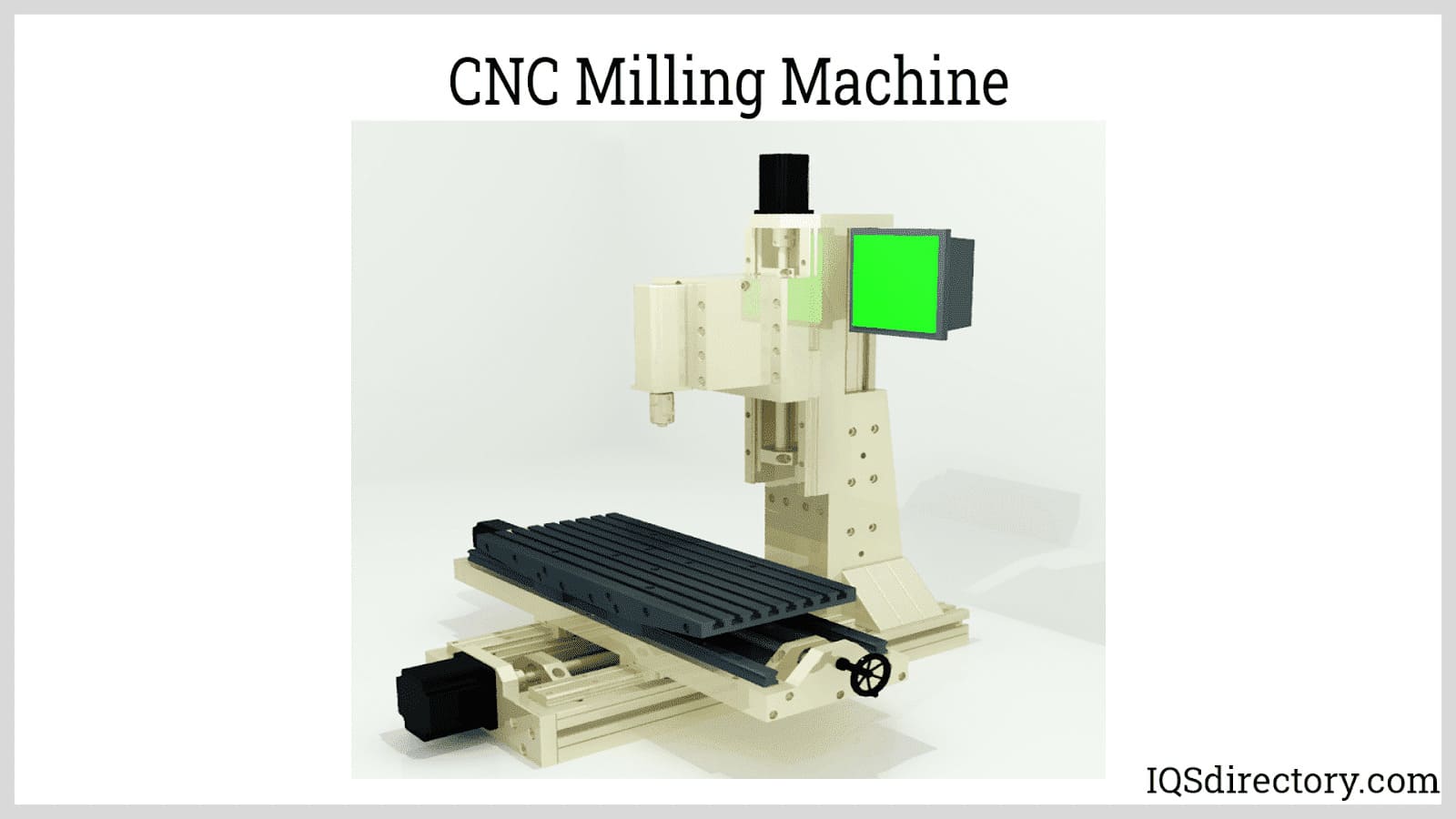
The CNC process was developed in the 1950‘s and took a leap forward in the 1980‘s with the addition of computerization. Unlike other production processes, CNC begins with a rendering by a computer, which creates a two or three dimensional representation of the part to be produced...
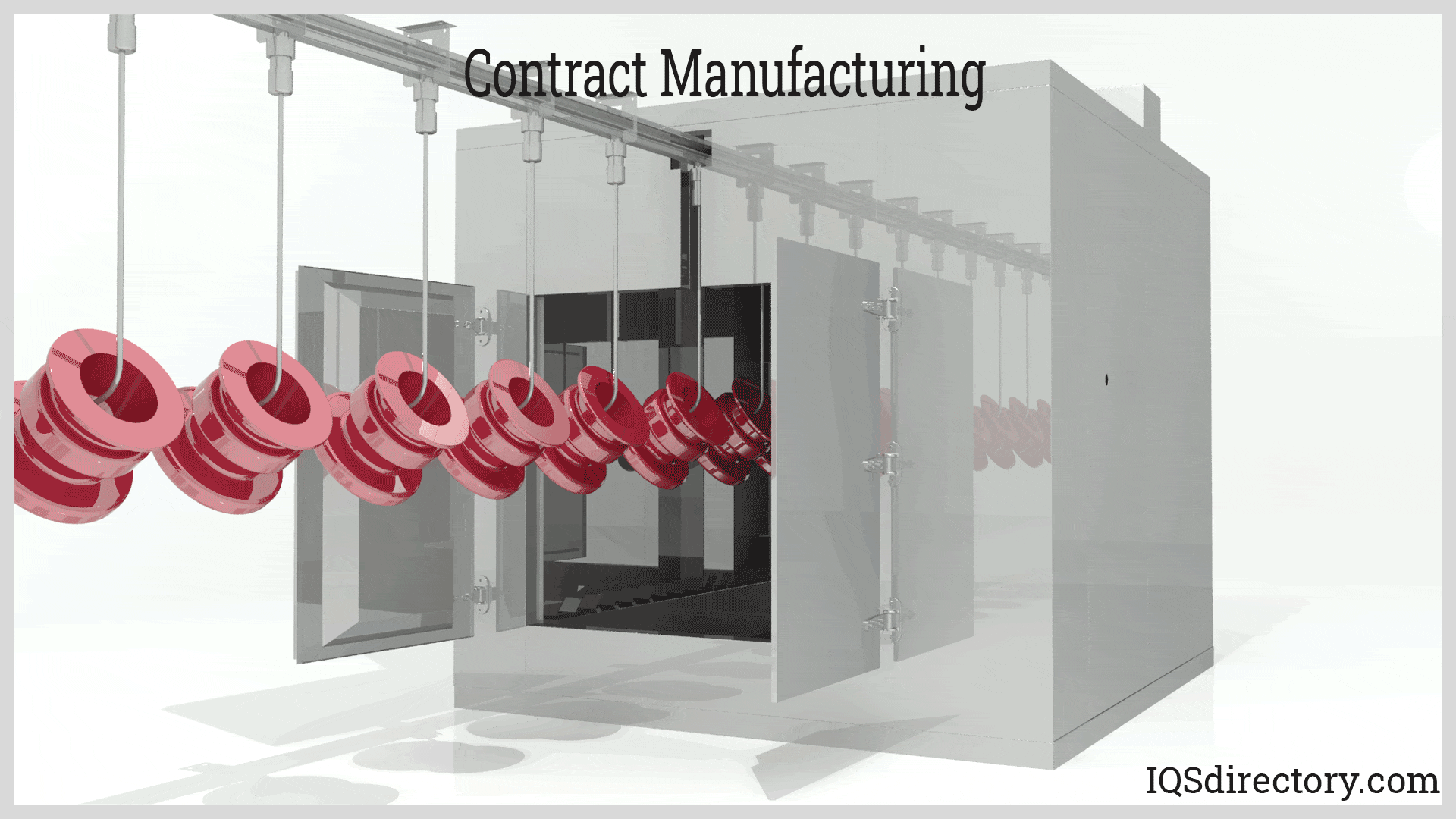
Contract manufacturing is a business model in which a company hires a contract manufacturer to produce its products or components of its products. It is a strategic action widely adopted by companies to save extensive resources and...
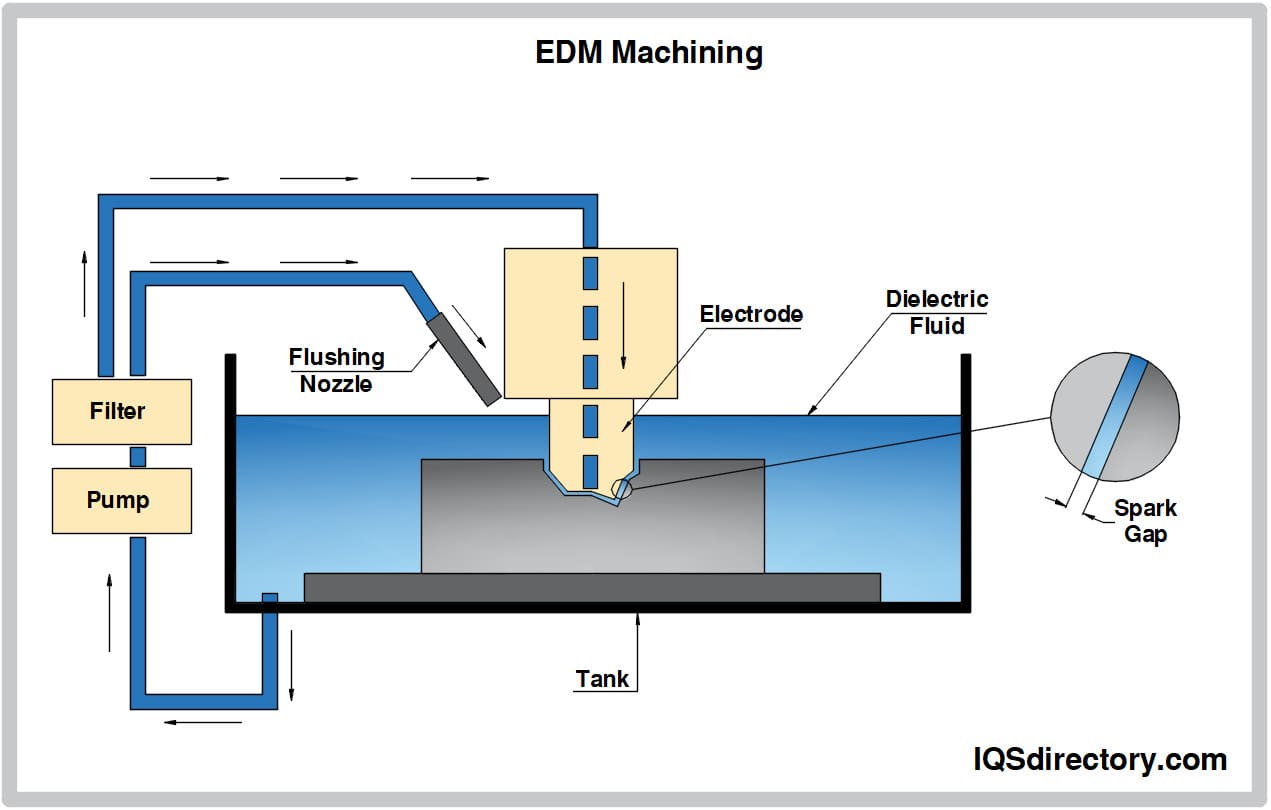
EDM machining is a contemporary machining method based on the removal of material from a part using thermal energy. The material is removed by local melting or vaporizing small areas on the surface of the part being machined...
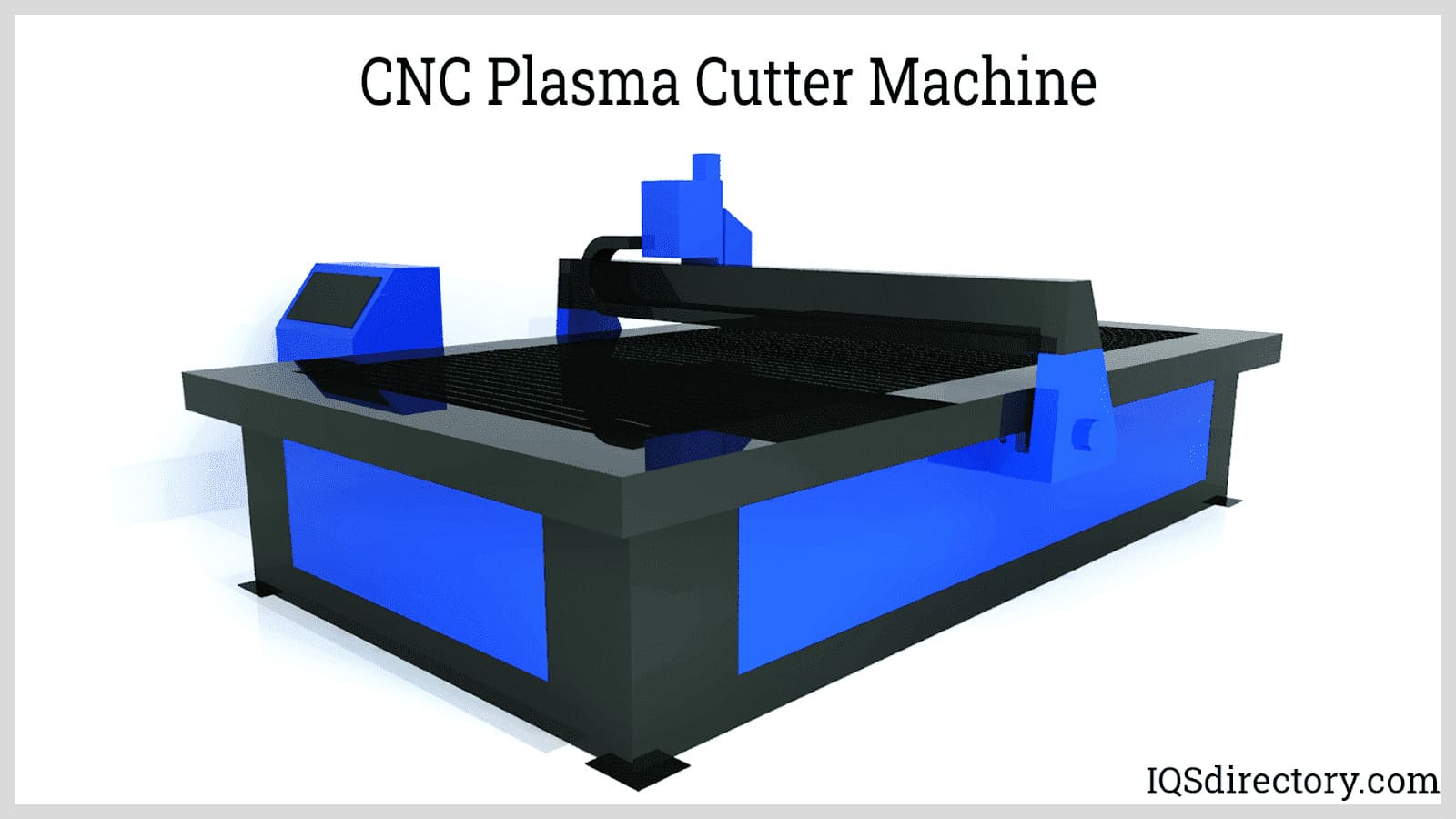
G-code is the name of a plain text language that is used to guide and direct CNC machines. For most modern CNC machines, it isn‘t necessary to know the meaning of G-codes since CAD and CAM software is translated into G or M codes to instruct a CNC machine on how to complete a process...
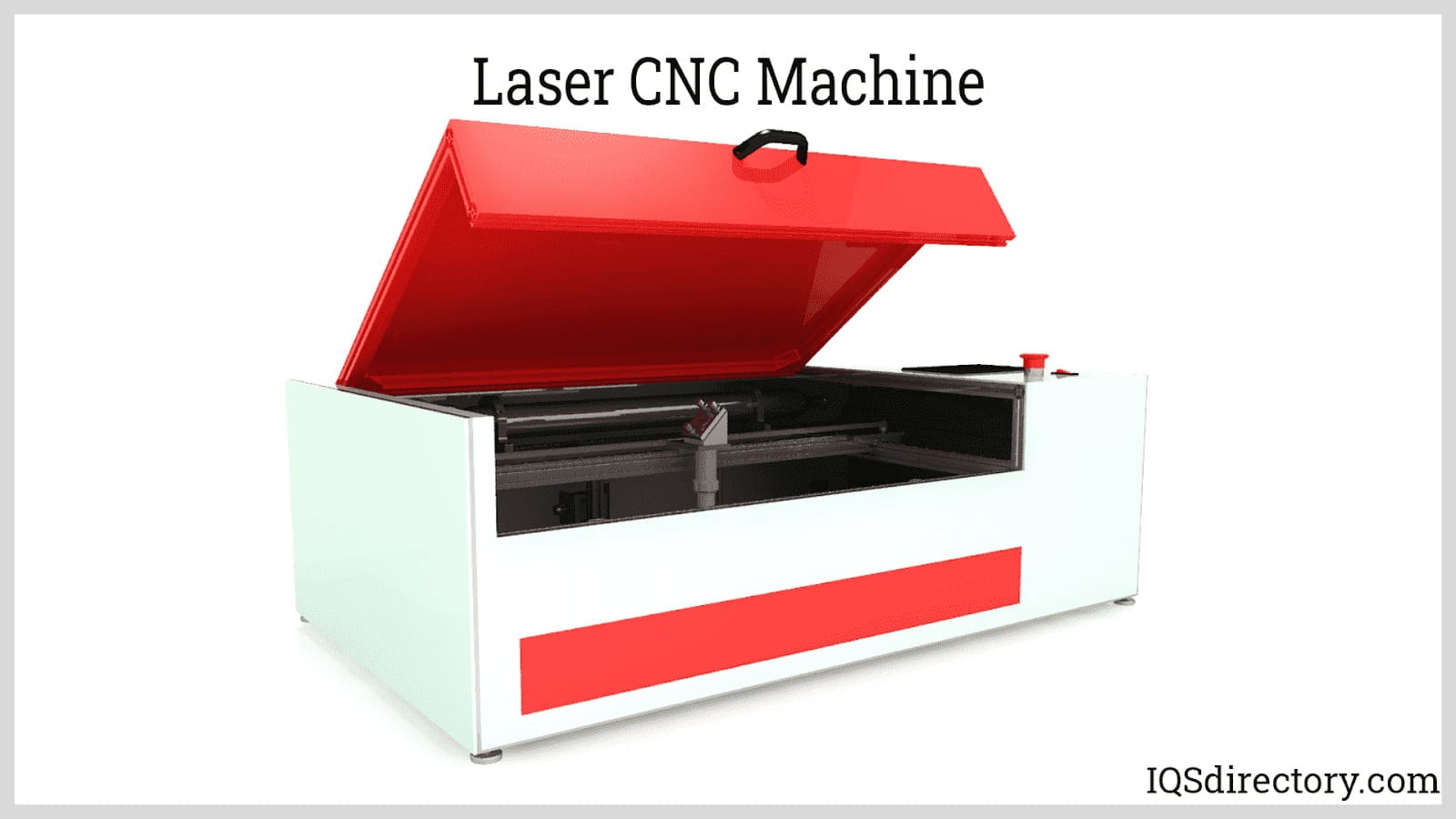
Computer numerical control (CNC) is a fundamental part of modern manufacturing. The majority of machines operate using instructions and guidelines that have been downloaded using a CNC program controller...
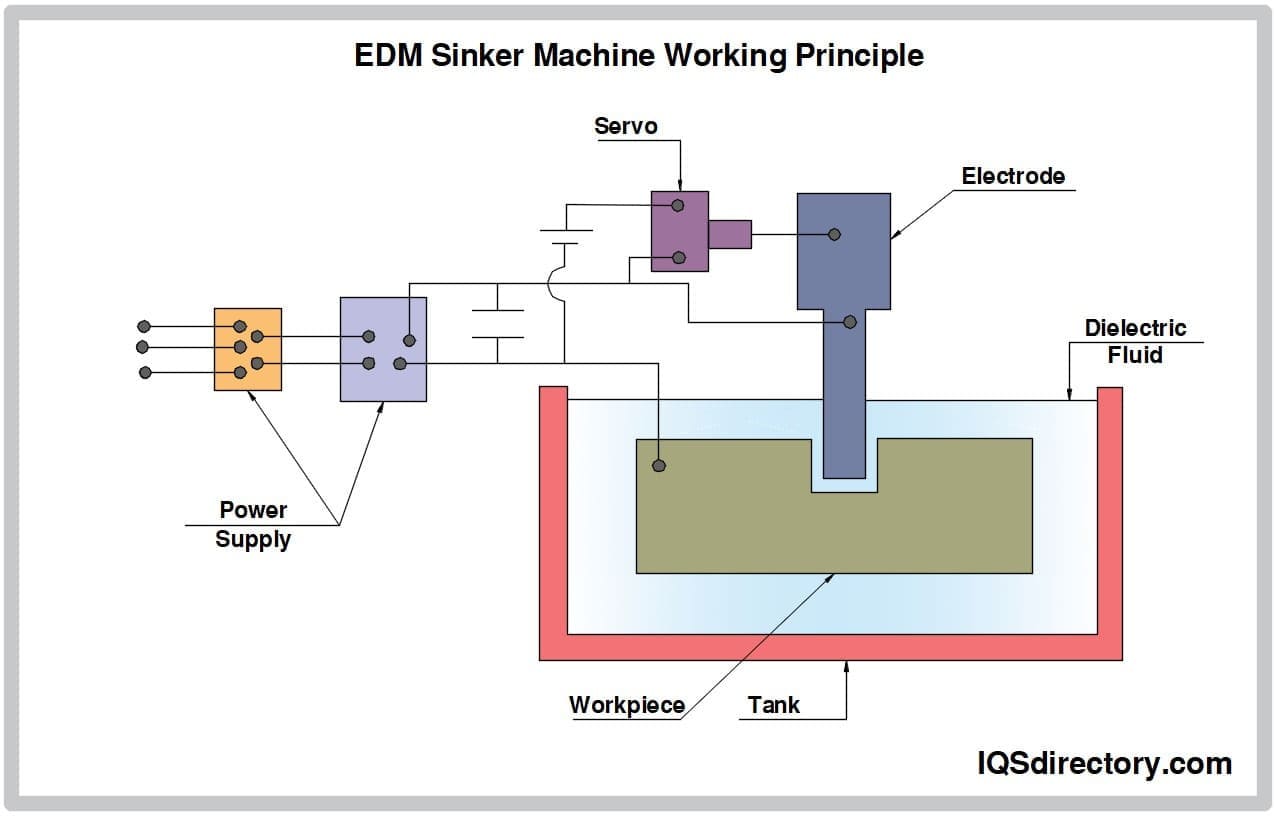
Sinker Electrical Discharge Machining (EDM) is a metal machining process used to create molds, dies, and parts using electrical sparks to erode material from a workpiece. It is preferred over other machining processes due to...
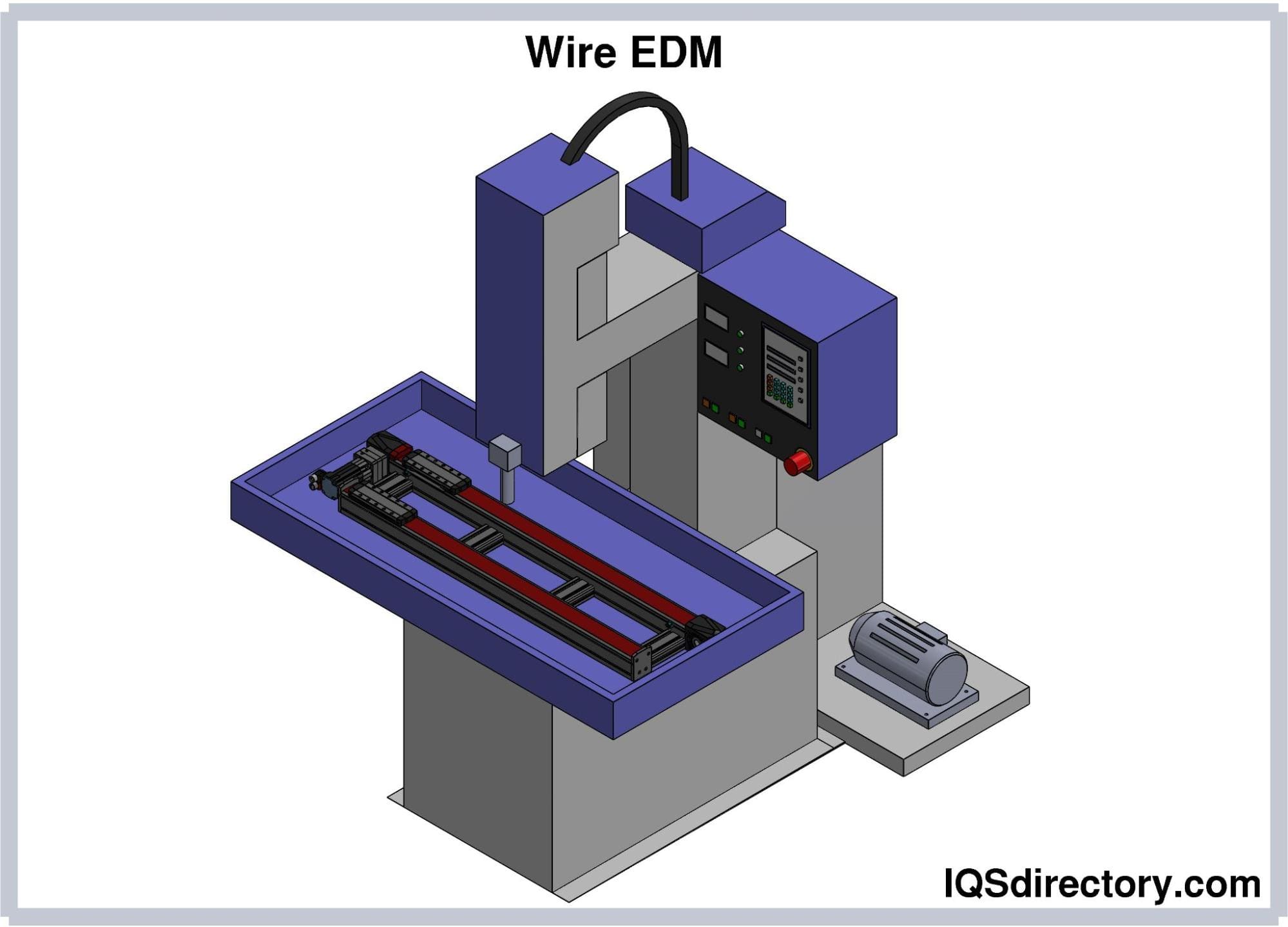
A method of precision machining called electrical discharge machining (EDM) removes material from a workpiece using thermal energy rather than mechanical force. A thin, single-strand metal wire and deionized water used to...
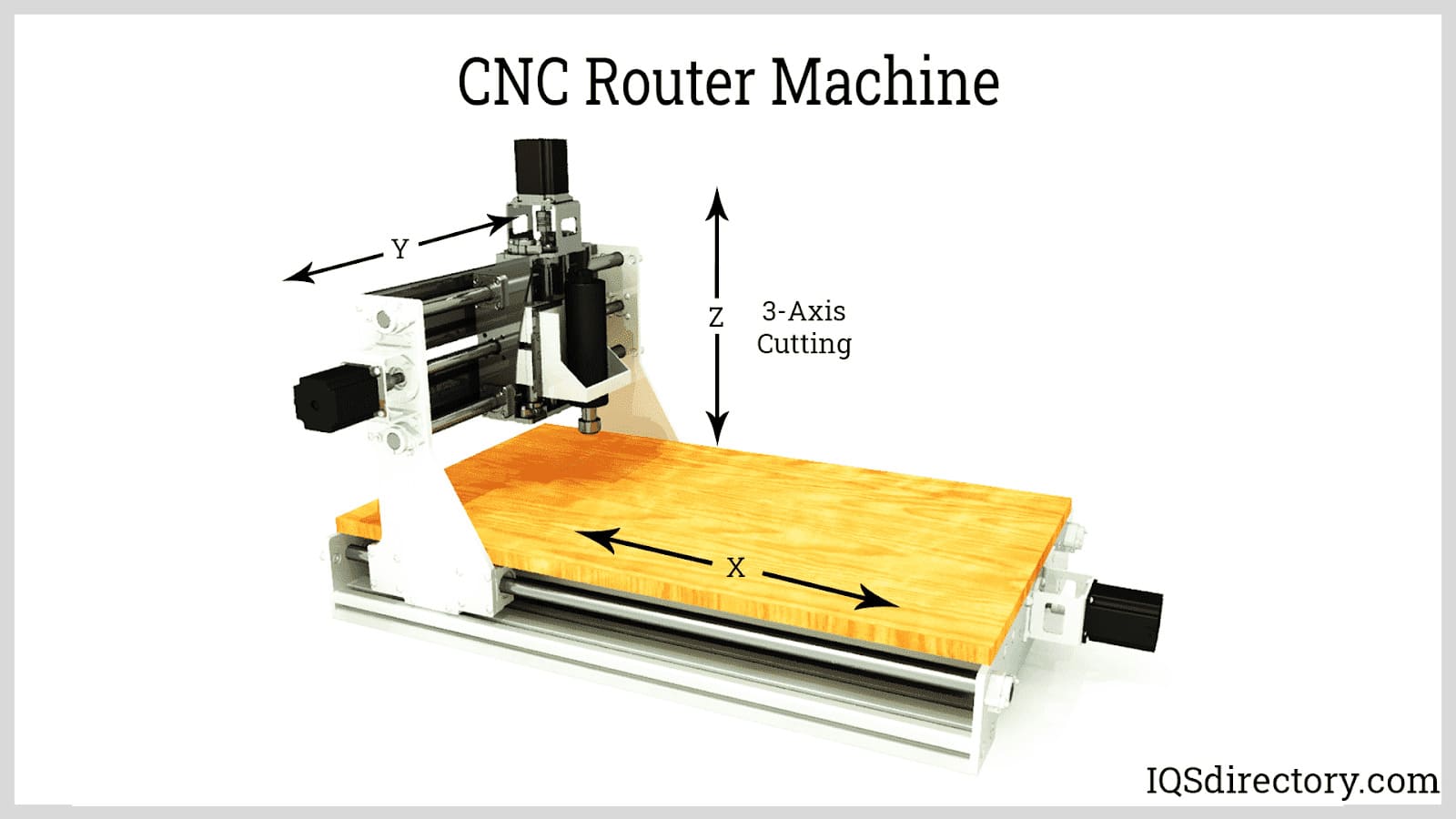
Machining is a manufacturing process used to produce products, parts, and designs by removing layers from a workpiece. There are several types of machining that include the use of a power driven set of machining tools to chip, cut, and grind to alter a workpiece to meet specific requirements...
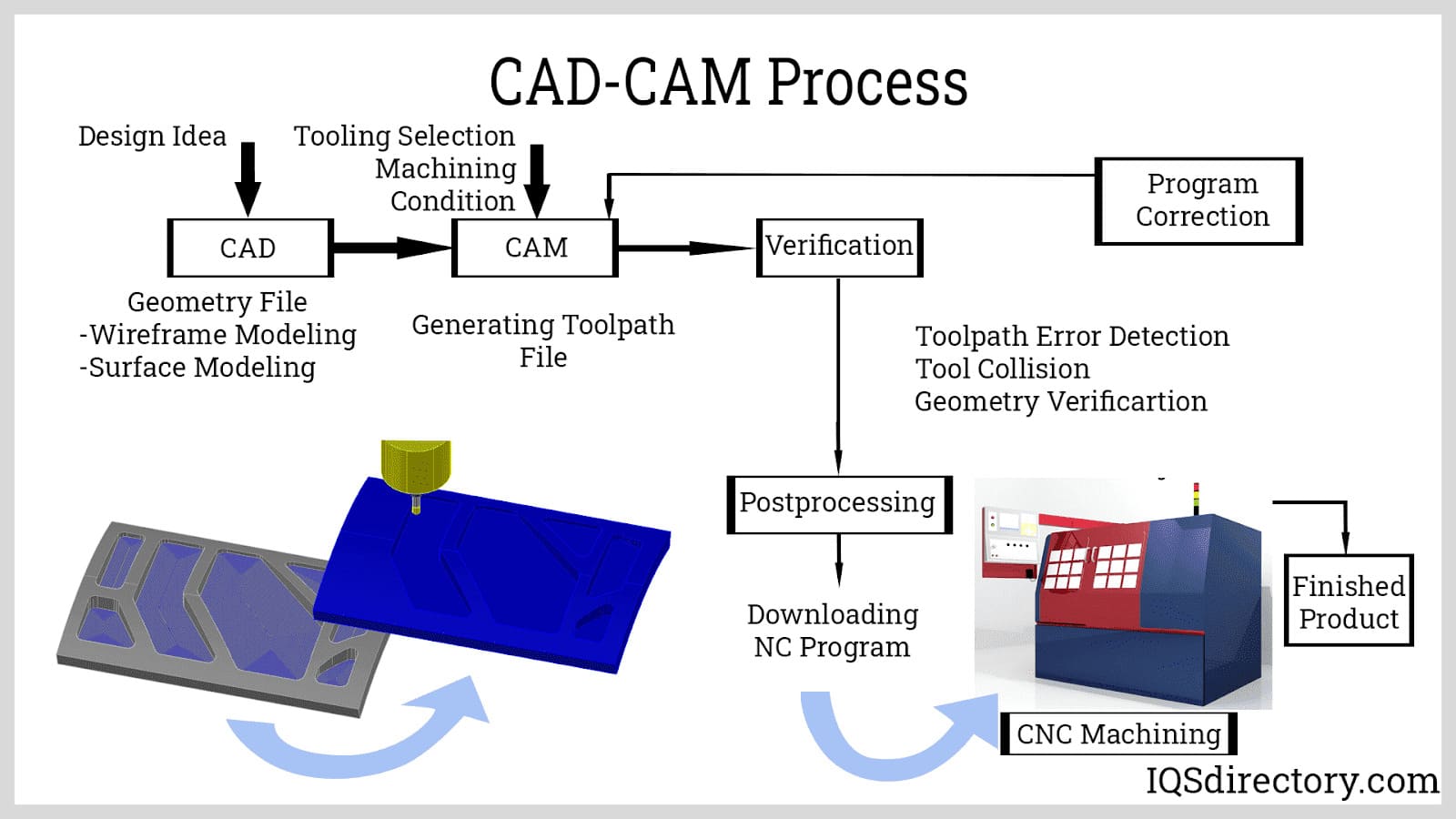
The CNC process, computer numerical control, is a method of manufacturing where programmed software directs the operation of factory tools and machinery. It is designed to manage a wide range of complex machines from grinders and lathes to mills and routers...